Young Pioneer Tours


Fukushima Daiichi Nuclear Power Plant Tour

Over a decade ago, on March 11th 2011, the Great East Japan Earthquake (or the Tōhoku Earthquake) shocked not only Japan but the entire world. The 9.1 magnitude earthquake then triggered a tsunami that reached 40.5 metres high and flooded 10 kilometres further inland of Japan.
The tragedy which reportedly killed close to 20,000 people also saw the loss of control of the Fukushima Daiichi Nuclear Power Plant, plunging the world into its biggest nuclear disaster since Chernobyl.
On your tour with YPT you’ll travel through the coastal area of Fukushima and survey not only the devastating damage done to the power plant and surrounding areas, but also how whole communities were intensely impacted. It is said that the implementation of evacuations, similar to those in Chernobyl, killed more people than the nuclear accident itself and despite the area deemed safe by the authorities, local residents remain wary of the nuclear contamination. You’ll have the unique opportunity to explore deserted cities and villages at your own pace.
This two-day to four-day trip is limited to a very strict small group and is a guaranteed departure. It can be combined with our Extremes of Japan Tour happening right after, to make the most of your visit in the archipelago!
Wednesday 31st July – Tokyo
- Arrive at your own leisure into Tokyo. The capital and largest city of Japan is well connected with many European and Asian countries. Self-transfer to Via Inn Prime Akasaka Hotel.
- Pre-tour meeting will be held at the lobby of our hotel at 6:00pm to discuss the tour itinerary and to meet your fellow travellers and YPT guide.
- We’ll head out for dinner taking in the mega city, famous for being one of the most populated in the world.
- For those inclined, we’ll head out for drinks. We recommend trying Asahi beer, umeshu or sake.
- Overnight stay in Tokyo.
Thursday 1st August – Tokyo – Fukushima
- Early morning start with breakfast before we head to Tokyo Station.
- Group B members: meet at the Marunouchi North Exit of Tokyo Station at 7:30am.
- Board our private bus and begin our 3 and half hour journey to Fukushima prefecture. We’ll stop halfway on our journey for refreshments and snacks.
- Arrival to the coastal area of Fukushima, one the heaviest hit areas from the tsunami. Despite some areas having restrictions lifted, local residents remain wary of the nuclear contamination. You’ll have the opportunity to first explore the former port, an eerie site.
- We’ll have lunch at a Japanese food court that caters mostly to the workers living in Fukushima with their efforts entirely focused on rebuilding and repairing.
- To understand the devastating impact of the earthquake, tsunami and nuclear disaster, you’ll visit the TEPCO Decommissioning Archive Centre. The Centre demonstrate the series of events that unfolded, in a transparent and open way compared to the Chernobyl disaster.
- See the Fukushima Daiichi Nuclear Power Plant. The disabled nuclear power plant suffered damaged beyond repair and the working reactors were not restarted after the Tōhoku earthquake and tsunami. Here you’ll get to explore the site with your knowledgeable guide.
- After a hard hitting and busy day, we’ll head to our hotel to relax and freshen up.
- Dinner at a local restaurant followed by a few refreshing drinks.
- Overnight in Fukushima
Friday 2nd August – Fukushima – Tokyo
- Breakfast at the hotel before we check out.
- Once we’re ready, we’ll head out to explore the coastal towns of Naraha, Namie and Futaba. Despite restrictions being lifted and major reconstructions efforts, these towns still remain mostly deserted.
- Visit Ukedo Elementary School – moments before the tsunami hit, all 82 students and staff safely evacuated to the nearby mountain. What remains of their school is for you to explore.
- Futaba has historical records of a tsunami caused by an earthquake in 1611. Since 2022, the town has seen residents slowly returning. We’ll continue to Namie. Despite a major clean up, the western parts of the town remains restricted.
- Lunch at one of the busiest malls in the area which sees only a few visitors each day.
- Visit of Naraha. It suffered a great deal during the disaster, however it was one of several towns to get “special zone for reconstruction and revitalisation”. Here you can see how life continues despite the population being halved.
- Although most of the homes have been removed due to radioactive contamination, other homes have been completely abandoned. This is your time to explore what remains of Fukushima at your own pace.
- We’ll begin our return bus journey back to Tokyo, with a stop halfway for a toilet break and refreshments.
- We’ll arrive at Tokyo Station at 8:00pm.
- Group B members: tour concludes – YPT is able to arrange post-tour accommodation or advice for outgoing flights.
- Remaining group members will head to our centrally located hotel to check in and freshen up.
- As it’s our final night, we’ll head for dinner and drinks taking in the nightlife of Tokyo.
Saturday 3rd August – Tokyo
- Breakfast at the hotel.
- Tour concludes. YPT are able to arrange additional nights in Tokyo and advice for further transport.
- We are currently planning an Extremes of Japan Tour which will start on the 4th and finish on the 10th. Please let us know if you are interested in this.
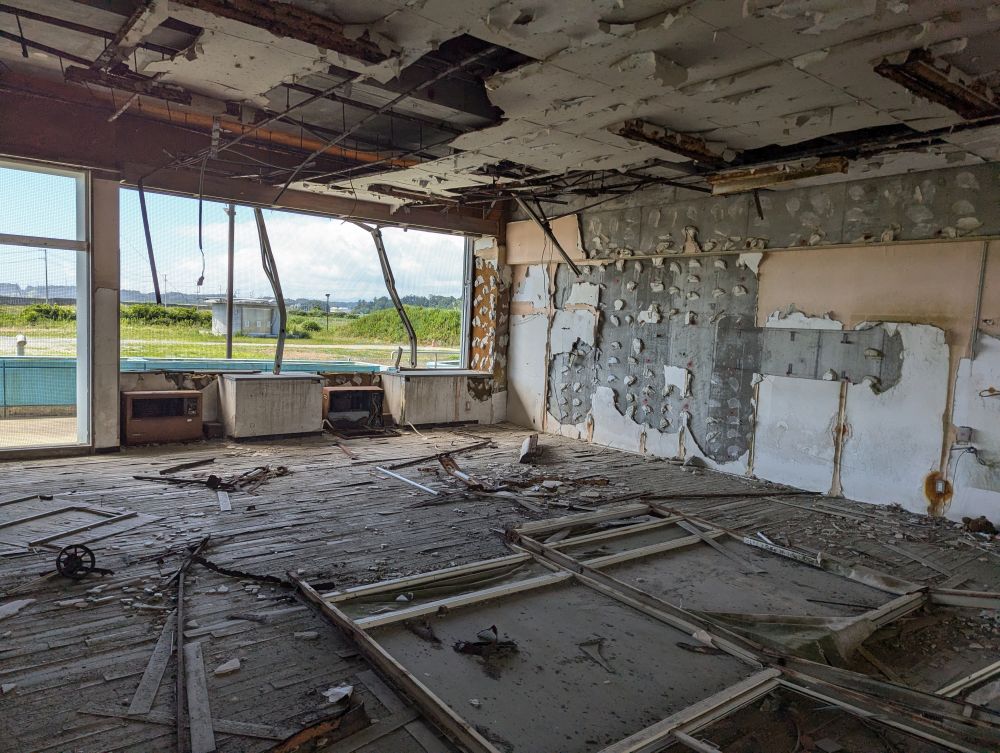
What is it like traveling to Fukushima with Young Pioneer Tours
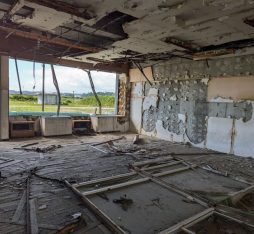
Traveling to Fukushima is currently gaining popularity as a post-disaster/dark tourism spot. What is it actually like to travel here and in particular to visit Fukushima with Young Pioneer Tours? This is obviously a subject we will have some bias on, b …
The History of Fukushima. Is it 2024’s Newest Tourist Destination?
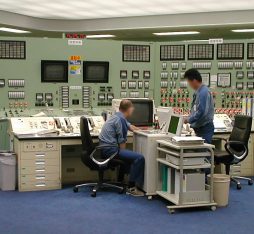
You may know the history of Fukushima, one of the most tragic events in Japan’s history. The Tōhoku earthquake triggered a tsunami in which 18,500 plus people in Japan lost their lives and thousands of homes, buildings and infrastructure were irreparab …
Osaka – Where History Meets Modern Magic
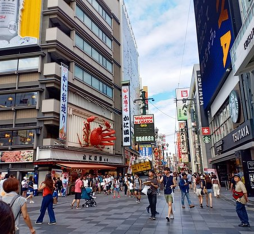
by Andy Khong Osaka, located in the Kansai region of Japan, is a vibrant city that combines historical charm with modern attractions. As the second-largest metropolitan area in Japan, Osaka offers a diverse range of experiences for visitors.With a rich …
What You’ll Learn on a Trip to Japan
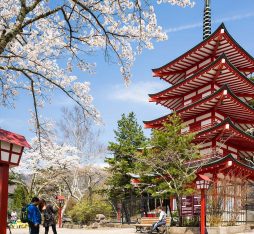
Do you want your next overseas trip to be memorable, educational, and fun? If you’re the kind of person who enjoys learning about other cultures and getting to know people who live in a completely different society, then spend one or more weeks in Japa …
What is Chongryon?
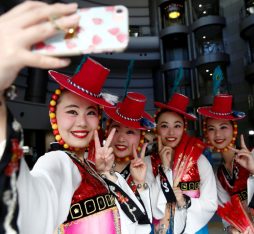
Fun fact, kids! The best North Korean footballer (arguably) is a chap called Jong Tae Se. AKA The People’s Rooney, he was not actually born in North Korea and essentially holds 3 de facto nationalities: Japanese, North Korean, and South Korean. So what …
In Pictures – Tsukiji Fish Market, Japan
Heading to North Korea? Looking for some travel ideas pre and post tour? If Japan is on your radar then Tokyo’s famous Tsukiji fish market is a must. Be prepared for a battle on the senses – It opens at 3am, houses 400 types of seafood, employs 65,000 …
- Tour Extensions
Want to extend your YPT adventure? Join one of our great tour extensions
- Start Date : July 31st 2024 End Date : August 2nd / 3rd 2024
- Price : $460 / $600
- Duration: 2 days / 4 days
Tour Highlights
- Visit the remnants of what was Daiichi Nuclear Power Plant and see it with your own eyes
- Explore the eerie deserted ghost towns of Fukushima
- Experience the nightlight of Tokyo with YPT
Inclusions and exclusions
- Accommodation on a twin-share basis
- All transport to complete the itinerary
- Entrance fees
- YPT & English-speaking local guides
- International flights
- Single supplement (Group A $180 & Group B $60)
- Lunches, dinners & drinks
- Personal expenses
- Travel insurance
- Tips for local guides & driver
We have expert guides ready to help answer any questions you may have.
Tripadvisor
Latest news.

Buy the YPT sponsored Nauru football shirt while stocks last!

Visa free travel to Belarus by land border

When will North Korea open for tourism? – July 2024 Update

An American in South Korea Heads North (Part 1)
- Terms & Conditions
- Payment Policy
- North Korea Tours – 2017 Tours
- Independent Tours
- North Korea FAQ
- Our Terms and Conditions
- Our Payment Policy Terms
©YoungPioneerTours.com 2024. All rights reserved.
Real Fukushima
Come and see today's fukushima and about the nuclear accident..
Guided informative tour by local residents
Daily life of Fukushima 2022
Feel free to look around

Fukushima Daiichi Nuclear Power Station Study Tour
We start a trial study tour to take people into Tokyo Electric Power Company (TEPCO) Fukushima Daiichi Nuclear Power Station once every month to learn about the real site of the disaster and ongoing decommissioning process. Next available slots are July 26th (Fri) and August 29th (Thur) . More details → click here .
Standard Tour

Custom Made Tours
A custom made tour is an independent trip plan designed and arranged just for you. An English speaking guide/driver will take you to look around Fukushima's coastal area, giving you a first hand experience of the area where the nuclear disaster took place. For more information click here
We also organize field trips for universities.
SCENES AND TOPICS
Workers at fukushima daiichi nuclear power plant.

Town of Okuma

Fifty People Ran up the Stairway of Suwa Shrine

Evacuation order lifted in Tomioka

Fish Nursery used Thermal Effluent from the Nuclear Plant

Volunteers Work Hard
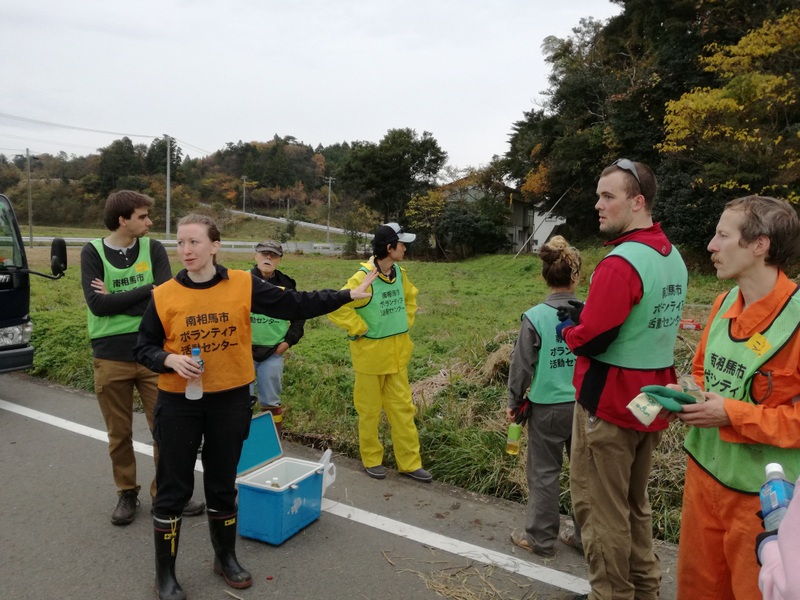
Trying to Rebuild Odaka - My Hometown

Fukushima Daiichi Nuclear Power Plant
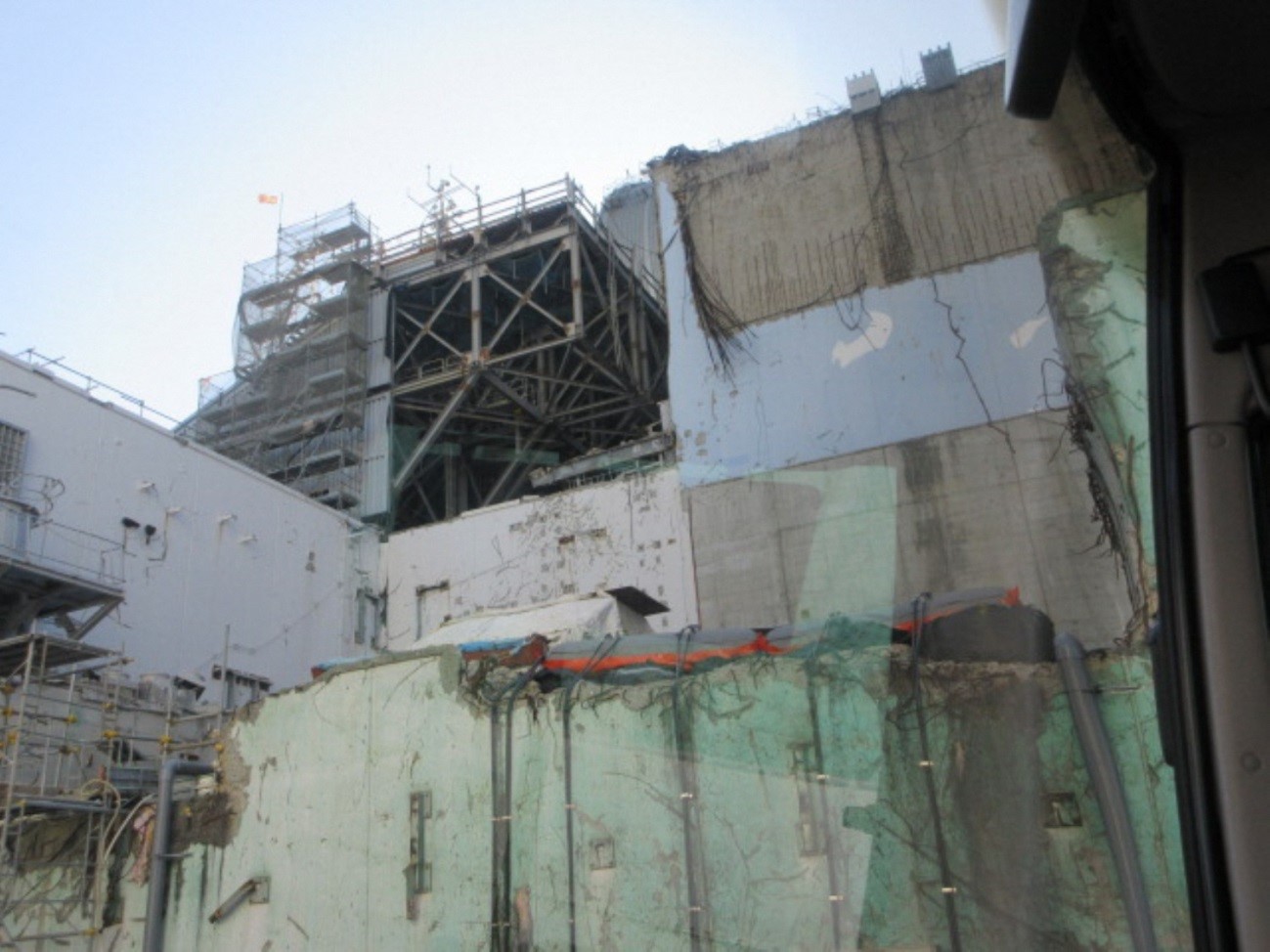
Marine House Futaba

JR Joban Line is Being Resotred

Along the National Route 6

Escape from the Tsunami and Radiation

Flowers will Bloom
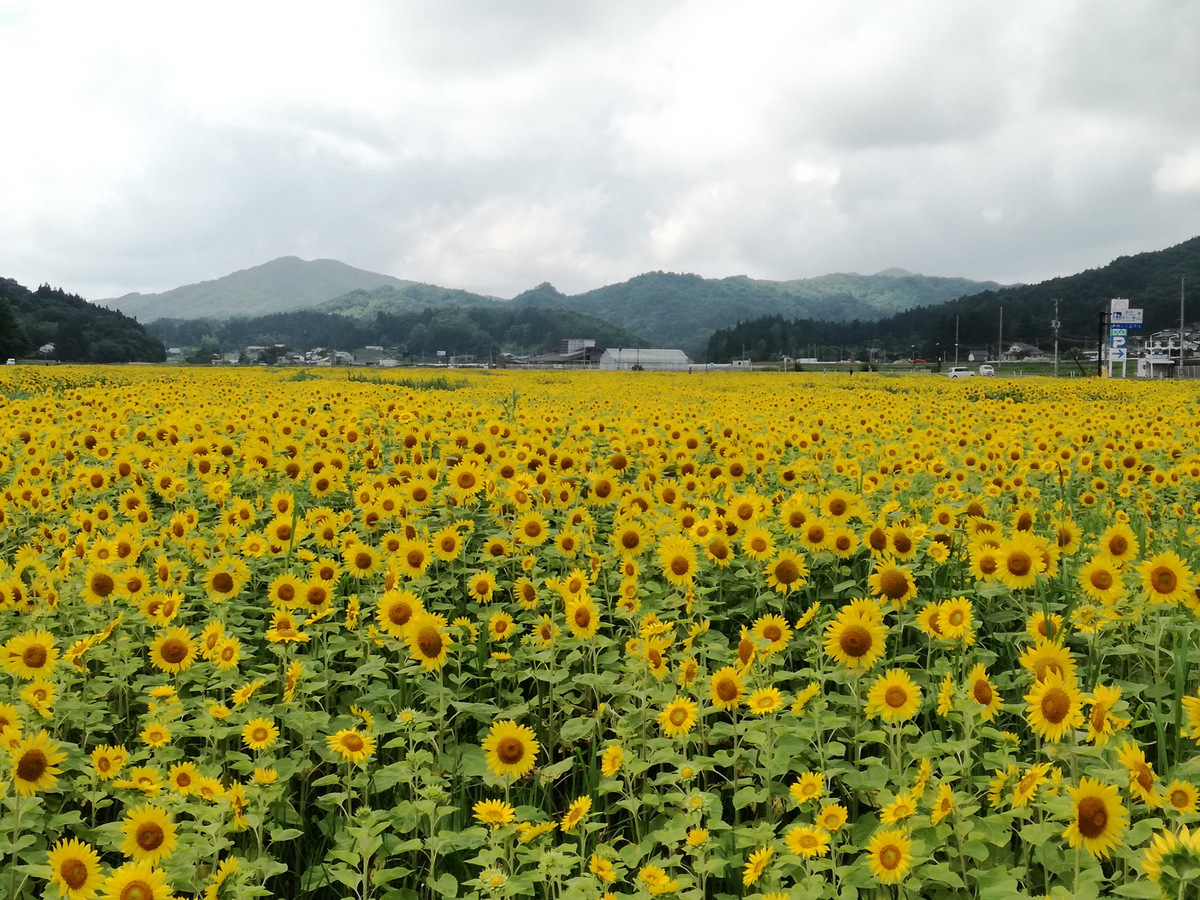
No Students were Lost at Ukedo Elementary School

Flowers Bloom in Namie

EXPERIENCES WITH US
There has been a lot of media in this area, especially the red zone and we wanted to understand more about the disaster, what happened, how the community is repairing and what are the challenges. So it was excellent to find Real Fukushima tour. It is like being in our own documentary with real facts and up to date information. Our guide has lived in this area all his life and his knowledge, passion and scientific explanations were invaluable. It is impossible to describe the area, especially the red zone, and how people have been affected and the extent and scale of the disaster. It is a humbling experience and I recommend that it is a must do to really appreciate what happened and now the cleanup and ongoing issues and successes are happening in Fukushima. Thank you, this tour is one that will stay with me for the rest of my life. →TripAdvisor

I can highly recommend this tour. The guide, being a local, has expert knowledge of the area and events and is very good at communicating in an informal and easy way. The tour gives, in my opinion, an unsentimental and true story of what happened in Fukushima and how it affected people living there. As such it is an important part of contemporary history, not only for Japan, but for the rest of the world as well. →TripAdvisor

The official tour of Fukushima exclusion zone and around. This is as real as you can get to see what actually is happening inside the area years after the earthquake strucked. The tour provides details and information of what had happened, what is happening now in the area. The tour took 4-5 hours, during that time you will be exposed to certain degree of radio activity area. In which is not dangerous at all. If you have seen Dark tourist, and interested in coming to see the area by yourself, don’t be afraid nothing as dramatic as in the show. This is the real thing, real fact, real lives, Real Fukushima. →TripAdvisor
LoI was lucky enough to find a tour company that is run by local residents trying to encourage people to see the real Fukushima, as opposed to what was depicted on the Dark Tourist show. If you wish to try with them please book your tour here, don’t forget to say that Travel Geek sent you 🙂 … and no I’m not on commission!rem ipsum dolor sit amet, consectetur adipiscing elit. Nulla id purus neque. Curabitur pulvinar elementum neque in dictum. Sed non lectus nec tortor iaculis tincidunt.

It was an absolutely impressive and recommendable tour. The guide was so awesome and she spoke English very well. Fukushima and also the contaminated area have such a nice nature. I think it is very important to show this place to get the people to know about the risks and consequences of nuclear power. And that is why it is necessary to keep some of the buildings and places to memories the people, also after the evacuation zone will be recultivated again. But especially for foreigners I want to say Fukushima is not just a nuclear contaminated zone it is also a really nice place to stay with beautiful nature and very cordially citizens.
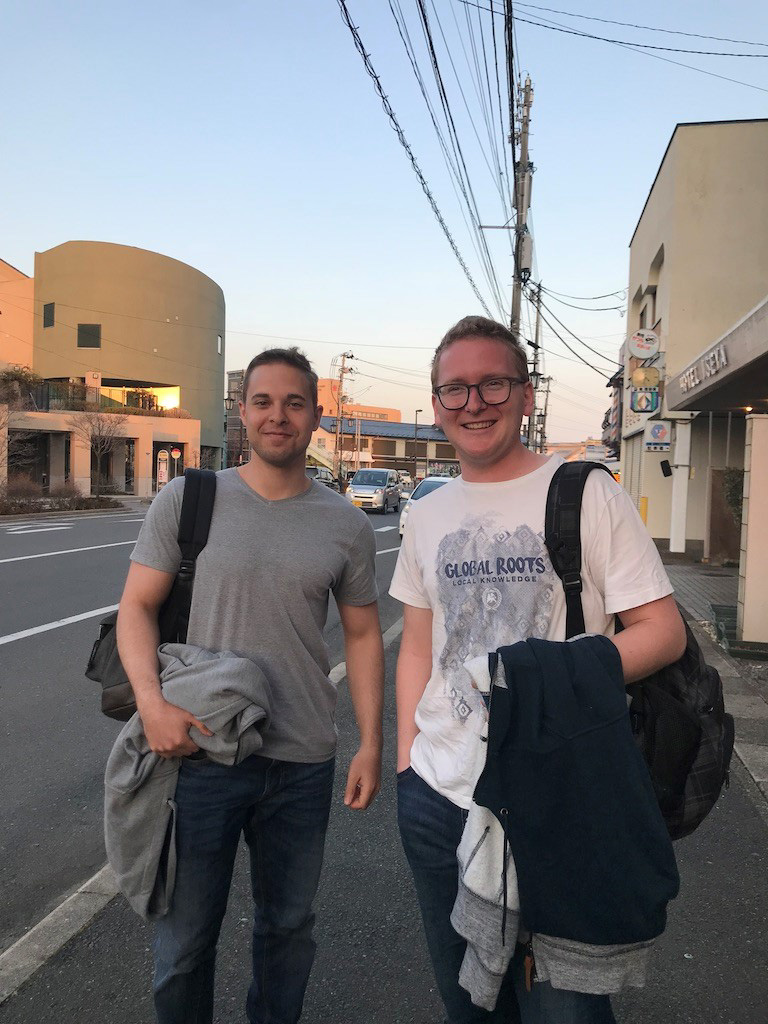
It was quite a surreal feeling being in the evacuation zone. It is one thing to hear about it on the news, but quite another to actually experience this on the ground in person. I was shocked at how deserted the evacuation-lifted areas were, especially Namie. Driving through the evacuation zone was quite eye-opening, and really gave me a sense of what is currently unfolding in the area in regards to the ongoing radiation issue. The one place that really left an impression on me was the town of Namie, mainly due to the fact that you can feel that people suddenly packed up and left one day, leaving behind everything. It is actually quite eerie.
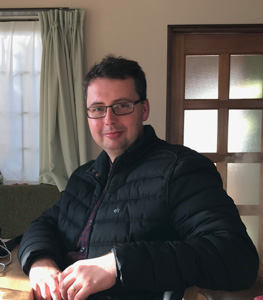
Karin has a masters degree in International Politics, speaks excellent English and was eager to welcome me to the Evacuation Zone and show me around. She had recently opened the Lantern House, a Bed & Breakfast guest house, right in Odaka (小高町), just 15 kilometers from the nuclear power station. Over the course of the following weeks we carefully planned my visit to the Evacuation Zone. I had never expected to run into someone as dedicated and knowledgeable as Karin. She knows all the data, all the places and all the people. When I came up with the idea to maybe do some short interviews with former evacuees, she arranged a meeting with Katsumi Anbe, a city government official who was the head of the Odaka ward education office before the disaster. On October 15, 2017 I stepped off the train and was picked up by Karin, who drove me to the Lantern House. I fell asleep in a big, beautiful Tatami room and was greeted by a home-made breakfast early in the next morning. →One Man, One Map
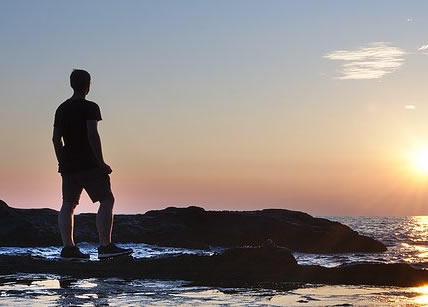
To join our standard tour , please come to Odaka or Namie Station. If you have JR Pass, take Shinkansen to Sendai and come down to Odaka by local train. It will take three hours from Tokyo. If not, take a JR train from Tokyo on the Joban Line for the cheapest. Ask Google or Jorudan .
POINTS OF INTEREST
Driving through Red Zone
You are not allowed to enter the Difficult-to-return Zone as a general rule. The national government has loosened the restriction one by one. As of August 2022, you can pass through it on designated roads. The roads marked in blue are open to four wheel vehicles without special permission. The roads marked in red are open to four wheel vehicles, motorcycles and mopeds. The Joban Expressway marked in green is open to four wheel vehicles and motorcycles over 125 cc. Please note that the expressway is a toll road.
The national government decontaminated designated areas and has opened them to the public. As of August 2022, t he areas painted with green are open to the public including walkers and bikers . The areas painted yellow will be opened in the near future.
Radiation Dose near the Fukushima Daiichi Power Plant
Radiation maps.

Accommodation

We recommend Futabaya Ryokan in the front of JR Odaka Station. The accommodation fee is 7500JPY with two meals. If you install Spot Tour App on your mobile phone and get seven or more stamps by visiting designated spots on the "Tour within 20km of Fukushima Daiichi Nuclear Power Station" (Search tour code 95057 in the app), you can receive 3000JPY accommodation subsidies at the Futabaya inn.

Ten years on: what is the situation with Fukushima’s fisheries?
I have been visiting the coastal area of Fukushima Prefecture regularly since 2014, to research...

The newly reopened J-village is a sports complex in Naraha town, which is one of...

Rebuild a community by renewable energy
Kawabusa is a small village. It is located 15km northwest of Fukushima Daiichi NPP. Twenty...
- GBP £
- CZK Kč
Fukushima Private Tour
- 1-20 of you and your friends
- Free rebooking or cancellation*
- English guide and local insider
- Off the beaten path, photo spots and meeting locals
- All inclusive: hotel, traditional dining, transportation and guide
BEYOND TOURISM
Explore Fukushima beyond the tourist sites, sneak into buildings, take a hike
Only proven routes, Geiger-Muller counter (dosimeter) with you all the time, free respirators
Create your own route and programm according to your preference
Meet locals, hear their stories (translated by your guide) and witness how life comes back from a no-go zone
WHAT IS INCLUDED IN YOUR PRIVATE FUKUSHIMA TOUR?
Fukushima inside out and outside in.
- LOCAL ENGLISH GUIDE - INSIDER
- FREE DOSIMETER, PROVEN ROUTES
- TRANSPORTATION TO/FROM TOKYO
- ENTRANCE TO NON-TOURIST SPOTS
- FOR 2+ DAYS HOTEL
- ALL INCLUSIVE, THE PRICE IS FINAL, NO HIDDEN FEES
The conquered nuclear disaster of the 21st century leaving you speechless
Beyond fukushima.
Taking you to the land of paradoxes – flourishing with new buildings, roads, seawalls standing next to abandoned ghost houses, dusty cars, empty shops and vending machines. Now, after the radiation levels dropped back to normal at most places, you are going to witness how humanity and nature copes with the disaster leaving almost nothing behind. The Fukushima private tour is a truly heartbreaking experience.
If you want to visit Fukushima Dai-ichi Nuclear Power Plant, please join our 2-day Group Tours from Tokyo .
Visiting the Fukushima area in private allows you to thoroughly learn about the cities and countryside in this prefecture before and after the damaging tsunami and nuclear meltdown in March 2011. On top of that, the flexibility of the tour itinerary and places visited gives you the freedom to explore on your own and even explore beyond the expected – including ghost streets, empty houses, abandoned schools, shops, even abandoned cars in petrol stations. All preserved and taken back by the hands of nature. The Fukushima private tour (from 1 to 7 days) will leave you amazed at how fast humans can cope with the largest nuclear disaster of this century.

You will hear how the Fukushima destiny serves as a role model today on how to cope with a nuclear disaster. The Fukushima area is now being cleaned and restored, with contaminated soil removed and people slowly coming back to their houses. You might even witness an encounter of neighbours after years of not seeing each other – hugging, full of tears and answering what they had done since the evacuation in 2011. With the Fukushima tour by ChernobylX you are supporting the local communities – we dine and stay in small family owned restaurants and hotels.

Your Fukushima tour programme depends on the number of days you choose and your preference, it can be changed on the go. We will fully cover your safety (dosimeters – Geiger-Mueller counters), permits, transportation, interpreting from the locals, accommodation (if needed) and traditional Japanese dining. With ChernobylX you will peek into the Fukushima story and make it the highlight of your Japanese adventure. We have been on a mission to CHALLENGE YOUR WORLDVIEW since 2008.
*See Terms and conditions for detail, 30-0 day before the tour, some cancellation fees may apply.
Meeting at the Tokyo railway station
Railway station is divided into sides marunouchi ( west) and Yaesu ( east)
Fukushima nuclear disaster Zone
Fukushima daiichi disaster zone checkpoint before entering the Zone
Namie "ghost" town
Abandoned town Namie located in Fukushima prefecture in Japan
Futaba town
Abandoned town in Fukushima prefecture located on the pacific ocean coastline
Tomioka town
Town affected by Fukushima Daichii nuclear disaster in 2011
Ukedo elementary school
A building of the Ukedo Elementary School wrecked during the tsunami
Abandoned house in Fukushima disaster Zone
Abandoned building inside the nuclear wasteland of Fukushima
Fukushima Police checkpoint inside the Zone
Entering to the Fukushima disaster Zone guarded by Police
Abandoned shop in Fukushima disaster Zone
This eerie electronics store within an abandoned nuclear ghost town
The abandoned cars of Fukushima
Cars inside the Fukushima Daiichi exclsuion Zone near Nuclear Power Plant
You are all covered for the Trip of your lifetime
Price includes.
- All permits
- English local guide and interpreter
- Geiger-Mueller counter (dosimeter) rental
- Transportation to and from Tokyo with a driver
- Museum and site entrance fees
- Clean Hotel (3*) - several day tours
- Half-board Japanese dining
- VIP spots for other X destinations: Chernobyl, North Korea, Baikonur..
FUKUSHIMA TOUR
Frequently asked questions.
Our customers say it simply: storytelling that turns a tour to Fukushima into an experience, the emotions when comparing Fukushima’s destiny with Chernobyl, a true warm hearted customer care covering your tour completely, all inclusive, and peeking into the hidden gems of Fukushima. As experts on all things Chernobyl, we give this tour a special glimpse of comparison of the Fukushima disaster against Chernobyl as well as the human touch when sharing the destiny of locals you meet.
You don’t need to worry, we have got your back. Everything is arranged for you (permits, transportation, dining, maximum safety, radiation safety checks, top pro-English speaking guides, etc). Grab your passport, your camera, some comfy shoes, a good mood, and let’s make the Fukushima tour unforgettable!
Safety first, that’s our go-to. The Fukushima zone is open for visitors with the compliance of all safety measures. That means you can explore the atmosphere of the abandoned area and be safer than ever before!
Visiting Fukushima is connected to radiation – yes, you can measure at some spots higher levels of radiation, where we will stay only a limited amount of time, and you will have a professional dosimeter with you all the time as you are part of the safest Fukushima tour . Safety was the number one question our founder Dominik asked himself in 2019 when coming to Fukushima for the first time. Since then our trained guides have been guiding you ONLY on health-non-hazardous places and trails . We ensure the dose of radiation received during 1 day of your Fukushima Private Tour will not exceed 5 microsieverts (5% of daily nuclear power plant safety norms in EU), which is equivalent to around 5 hours on an intercontinental flight.
During the Corona pandemic, we have ensured the absolute safety of you and your fellow travellers by an airline-level of disinfection and precautionary measurements: temperature check, face masks, gloves, antibacterial gel, disinfected buses and cars, guides and drivers with masks. Together, we can make sure you come back home safe and thrilled. For more details please read the Corona update .
Due to actual constraints, radiation safety or weather conditions in the Fukushima Zone, ChernobylX keeps the right to change the program of the itinerary, informing you about any constraints.
Aditional Tours
Another x.tours experiences, tito’s croatia private tour from zagreb, private ignalina tour from vilnius, baikonur 2-day tour, if you waited for a sign, this is it..., this website uses cookies.
Cookies help to improve the services we provide to you. Read information on how we use them and how you can reject cookies by setting your browser.
Functional Cookies Some cookies we place on your browser ensure that the Chernobyl X website delivers you information and services securely and optimally.
Legitimate interest
Advertising cookies We sometimes use tracking pixels that set cookies to assist with delivering online advertising.
You are using an outdated browser. You can update it on this page .
Touring the Fukushima Dai-ichi Nuclear Power Plant
Of all the places you can travel in Japan, from ancient temples to pulsing cities to bracing mountaintops, one of the least known is the stricken Fukushima Dai-ichi nuclear power plant. Timothy Hornyak takes a scheduled tour of the plant, at one time considered one of the most dangerously radioactive places in the world.

IAEA Director General Rafael Mariano Grossi visits Fukushima Dai-ichi in 2022 (Photo courtesy Tokyo Electric Power Company Holdings, Inc.)
The Fukushima Dai-ichi Nuclear Power Plant was severely damaged in the March 11, 2011 magnitude-9 earthquake and tsunami that devastated northern Japan. When the flooded generators for the cooling system failed, the meltdowns, hydrogen explosions and massive radiation release resulted in mandatory evacuations of thousands of people. Twelve years after the disaster, however, decontamination efforts have made headway. Not only have most evacuation orders been lifted, visitors can tour the Fukushima plant safely, with minimal radiation exposure.
Dai-ichi today
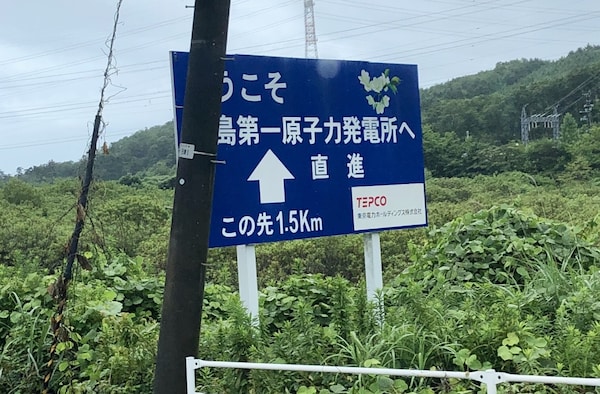
A sign by the roadside welcomes people to the Fukushima Dai-ichi nuclear power plant (photo credit: Tim Hornyak).
Why go to Fukushima Dai-ichi? You might have an interest in “dark tourism,” the allure of a forbidden site, or the enormous engineering challenges of managing and taking apart a wrecked nuclear power plant. Or you might want to simply learn more about the catastrophe and its aftermath. Whatever the reason, it’s important to know about the current situation at the plant before you go. Today, it’s a hive of activity—at times, there are over 4,000 workers at the plant, but biohazard suits are no longer required in over 90 percent of the complex. That means it’s relatively easy for visitors to enter and learn about operations there.
"Stored in about 1,000 house-sized tanks all over the complex, the volume reached about 500 Olympic swimming pools."
Fukushima Dai-ichi grabbed headlines in 2023 when operator Tokyo Electric Power Co.’s (TEPCO) announced it would begin dumping some of the 1.3 million cubic meters of water that has been used to keep the nuclear fuel and other debris cool. Stored in about 1,000 house-sized tanks all over the complex, the volume reached about 500 Olympic swimming pools and continued to grow by roughly 100 tons a day. TEPCO’s rationale for the move was it was running out of room at the large plant and needed space to setup facilities for decommissioning work, a job that’s expected to last at least until the 2050s. With the backing of the Japanese government and the U.N.’s International Atomic Energy Agency, TEPCO began flushing the wastewater into the Pacific Ocean after treating it with a purification system designed to filter out radioactive contaminants. The wastewater release was controversial, prompting opposition from marine scientists and a ban on Japanese seafood in China, but early seawater tests have not shown elevated levels of radiation.
Is it safe?
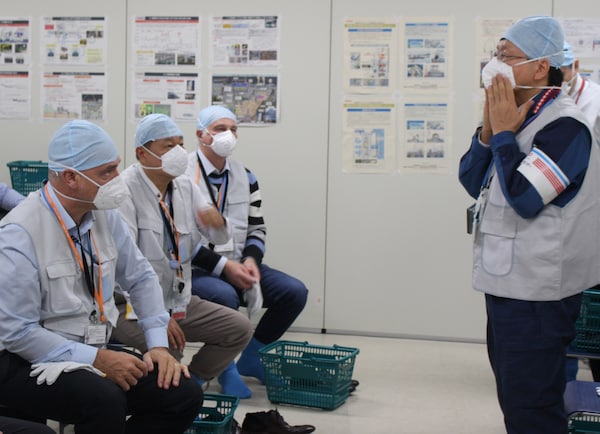
A TEPCO staff member instructs visitors on safety tips and how to wear protective gear (photo courtesy Tokyo Electric Power Company Holdings, Inc.).
Is it dangerous to visit Fukushima Dai-ichi? It really depends where you go and how much time you spend there, but it seems to be a safe experience for the average visitor. You will probably be exposed to a small amount of radiation. Tours may be a combination of bus rides and brief walks inside the complex. Depending on your tour, you may be given a personal dosimeter to measure the radiation you’re exposed to, as well as protective gear such as helmets, gloves, boots and N95 filtration masks. Dosimeters with large displays are also found throughout the complex and in the minibuses that shuttle visitors around. The daily radiation limit for visitors is 0.1 millisievert, which is about the equivalent of a chest X-ray, but most visitors are likely to get much less exposure than that on a roundtrip flight from Tokyo to New York. Depending on the tour, some visitors may go through individual radiation checks that measures exposure before and after going to the areas around the reactor buildings. Access to the complex and the facilities inside it is tightly controlled, so you can’t walk around freely. You’ll have to present photo ID, and go through security screening. You must follow your guide and obey all the rules. This includes restrictions on photography (in part due to the danger of terrorists using imagery to enable attacks on the complex) and just about any object you might want to bring into the plant.
What’s it like going there?
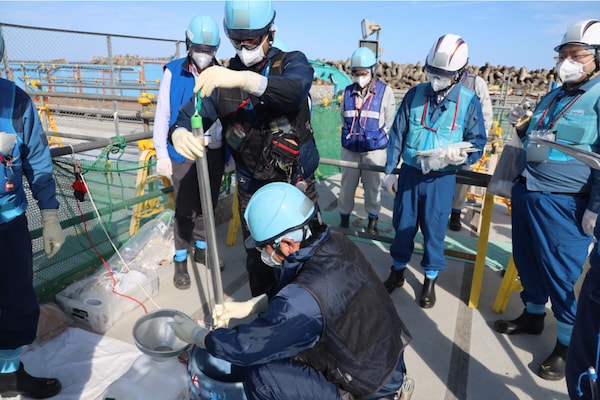
Plant workers and observers test wastewater after purification and dilution (photo courtesy Tokyo Electric Power Company Holdings, Inc.).
Visits to Fukushima Dai-ichi usually begin at the JR Joban Line Tomioka Station or the nearby TEPCO Decommissioning Archive Center, a facility with exhibits and audiovisual materials about the disaster. From there, it’s a 20- to 25-minute bus ride to the plant itself, past abandoned stores, homes and car dealerships, many of which are now surrounded by weeds. Even in Tomioka itself, where there are recently built homes and shops, there are relatively few people and vehicles on the roads. Once through the entrance, you may get a briefing at the plant headquarters on the edge of the complex. If you’re going to do some walking around inside, you may go through the security and health checks described above, before being outfitted with a dosimeter and protective gear. If you’re riding a TEPCO minibus down to the reactor building area or water-treatment facilities, there might be an onboard dosimeter. Watch as the numbers climb the closer you get to the reactor buildings by the coast.

Giant pipes in the Advanced Liquid Processing System for treating wastewater at Fukushima Dai-ichi (Photo credit: Kimimasa Mayama/EPA/POOL).
With an area covering about 3.5 million square meters, the complex is a town-sized maze of enormous construction equipment, storage tanks and large buildings where the wastewater is processed. There’s an eerie silence here, occasionally punctuated by the rattle of heavy machinery. There are few birds—most trees were removed after the disaster to make room for the tanks; the proportion of green space in the complex fell from about 60 percent to less than 25 percent. Past the seemingly endless rows of storage tanks, down by the sea, are filtration and dilution units, emergency valves, holding tanks and networks of pipes used for the release of wastewater. In the shallow water nearby stands an immense metal containment tank has been mangled like a dog’s chew toy. Belowground is an undersea tunnel through which the treated water is discharged to a release point about 1 km offshore.
"The Blue Deck will likely be the most contaminated spot on the tour, as shown by a dosimeter display on the deck."
The highlight of a tour to Fukushima Dai-ichi is the Blue Deck overlooking Units 1 to 4, where explosions ripped through the buildings in 2011. The structures are in various states of damage or repair, but some contain highly radioactive nuclear fuel and debris that will have to be disposed of in the long decommissioning process. The Blue Deck will likely be the most contaminated spot on the tour, as shown by a dosimeter display on the deck, and while it offers a panoramic view of the heart of Dai-ichi, you may not want to linger.
Signing up for a tour
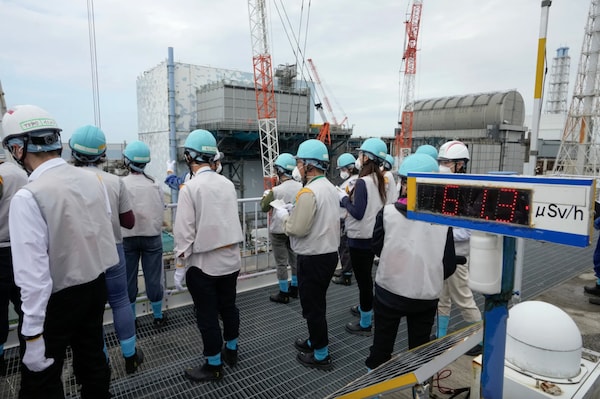
A dosimeter reads 61.3 microsieverts per hour as journalists survey reactor buildings where explosions occurred in 2011 (photo credit: Kimimasa Mayama/EPA/POOL).
Japanese-language tours are available. Hankyu Travel offers a three-day visit to the area for ¥79,900 per person). Finally, free tours organized by TEPCO itself are offered to journalists, diplomats and others through the auspices of organizations such as the Foreign Press Center Japan. However you get there, visiting the site of one of the worst nuclear disasters in history is an experience you won’t soon forget. Presently, there are a few monthly English-language tours being held on a trial basis that go inside the complex as well as to the surrounding region and reopened evacuation areas where participants can meet with people rebuilding the community. A google search will find them if they are still being operated.

This website uses cookies.

Fukushima Daiichi Nuclear Power Plant 2-Day Tour From Tokyo
The Fukushima Daiichi Nuclear Power Plant Visit 2 Day Tour from Tokyo offers a unique opportunity to explore the impacted Fukushima Daiichi Nuclear Power Plant and gain a first-hand perspective on the events of March 11, 2011.
With an equipped guide and a focus on safety, visitors can learn about the current state of the plant and deepen their understanding of the incidents and their aftermath.
This comprehensive tour has received positive feedback from visitors, making it a popular choice for those seeking a deeper insight into this historic event.
Great News! You can reserve for free on Viator and cancel right up to the day before without paying. Click the button below to save your spot now.
Quick Takeaways

- Gain a first-hand perspective on the events of March 11, 2011
- Deepen understanding of the incidents and their aftermath
- Witness the challenges faced by affected communities and the ongoing recovery efforts
- Reflect on the implications for future nuclear power plant safety and the importance of disaster preparedness and response
Day 1: Departure From Tokyo and Arrival in Fukushima
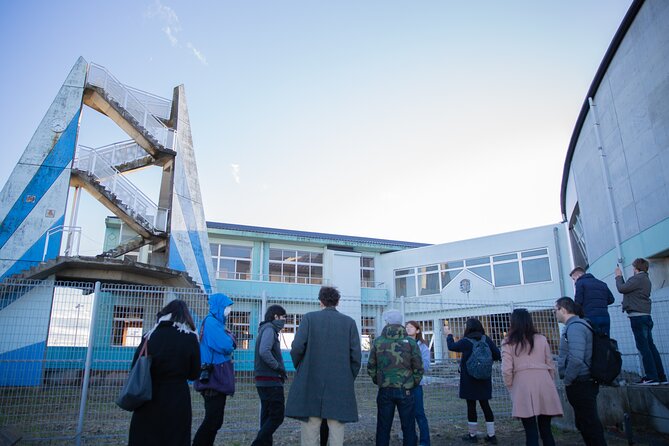
The tour give you a first-hand perspective on the incidents that occurred on March 11, 2011, and to deepen understanding of the impact they’d on the region.
Equipped with a Geiger counter for safety, the group explores Fukushima and engages in cultural exchange with the locals. This interaction allows for a unique opportunity to hear personal stories and experiences, fostering a deeper connection to the people and the place.
Through this exploration, participants gain a comprehensive understanding of the events and their lasting effects, while also building meaningful connections with the resilient community of Fukushima.
Day 1: Exploring the Impact Zone and Fukushima Daiichi Nuclear Power Plant
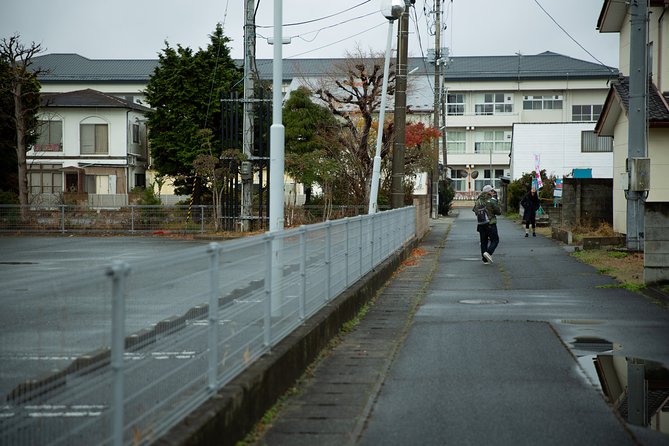
The tour offers a unique opportunity to witness the aftermath of the disaster and deepen one’s understanding of the events that unfolded on March 11, 2011. As the group navigates through the impact zone, they are able to see the physical and environmental consequences of the nuclear accident.
With the tour guide’s expertise, they gain a comprehensive understanding of the measures taken to mitigate the effects of the incident and the ongoing efforts in the area’s recovery.
Day 2: Understanding the Aftermath and Recovery Efforts
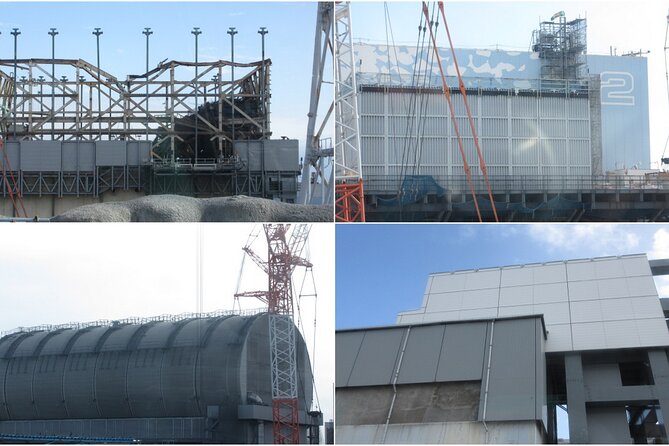
- Understanding recovery: By witnessing the impact zone firsthand, the group gains insight into the challenges faced by the affected communities and the steps being taken to rebuild their lives.
- Rebuilding communities : Through interactions with local residents and community leaders, the group learns about the resilience and determination of the people in Fukushima as they work towards restoring their towns and livelihoods.
- Ongoing recovery efforts: The group observes the ongoing decontamination and reconstruction efforts in the area surrounding the Fukushima Daiichi Nuclear Power Plant, contributing to a better understanding of the long-term recovery process.
- Importance of education and awareness: The group engages in informative discussions and educational sessions on nuclear energy, radiation safety , and the lessons learned from the Fukushima incident, highlighting the importance of spreading awareness and knowledge to prevent future disasters.
Day 2: Witnessing the Resilience of Fukushima’s Communities
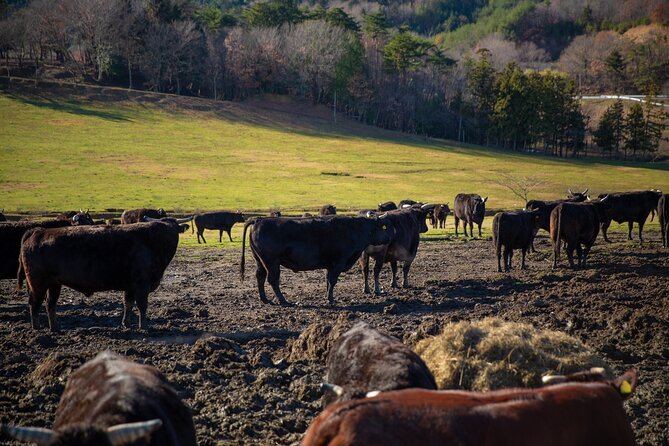
The impact of the Fukushima Daiichi nuclear disaster in 2011 was devastating, but the communities affected have shown remarkable strength and determination in rebuilding their lives.
During the tour, visitors have the opportunity to see firsthand the progress that has been made in the recovery efforts. They witness the resilience of the communities as they visit places like the Fukushima Daiichi Nuclear Power Plant and engage in conversations with local residents.
These interactions provide a unique insight into the challenges faced by the community and the inspiring stories of resilience and hope that have emerged from the aftermath of the disaster.
The tour offers a powerful and enlightening experience that highlights the strength and resilience of Fukushima’s communities in the face of adversity.
The Sum Up: Reflecting on the Fukushima Daiichi Nuclear Power Plant Visit
Visitors reflect on the Fukushima Daiichi Nuclear Power Plant visit and gain a deeper understanding of the impact and ongoing recovery efforts.
- Lessons learned from the Fukushima Daiichi Nuclear Power Plant visit
- Understanding the long-term effects of the incident
- Implications for future nuclear power plant safety
- The importance of disaster preparedness and response
The Fukushima Daiichi Nuclear Power Plant visit provides visitors with a unique opportunity to witness the aftermath of the 2011 nuclear disaster and gain insights into the ongoing recovery efforts. By reflecting on their experience, visitors can learn valuable lessons about the importance of safety measures, emergency preparedness , and effective response strategies in the face of such incidents.
On top of that they can develop a deeper understanding of the long-term effects of the disaster and its implications for the future of nuclear power plant safety. The visit offers a chance to reflect on the past and consider the necessary measures for a safer future.
Here's some more great Japan experiences nearby that we think you'll like.
- A Day as a Sushi Chef
- 1-Day Trip: Mt Fuji Kawaguchi Lake Area
- Asakusa: Tokyo’s #1 Family Food Tour
- Esim Japan Data Plan
Frequently Asked Questions
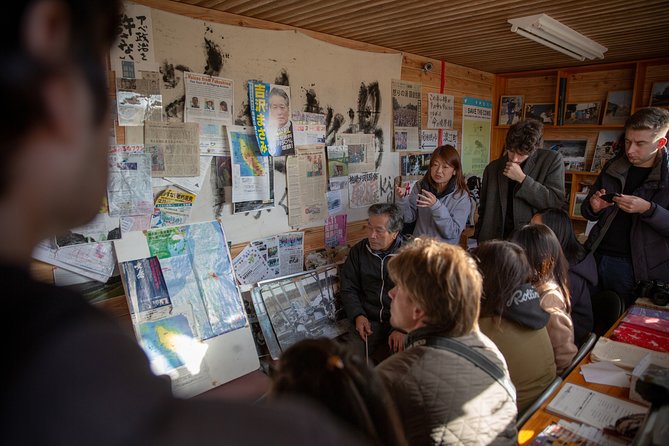
What Safety Measures Are in Place During the Tour to Protect Visitors From Radiation Exposure?
During the tour, visitors are protected from radiation exposure through strict radiation protection protocols and safety precautions. These measures include the use of Geiger counters, guidance from equipped guides, and adherence to safety guidelines.
Are There Any Age Restrictions or Health Requirements for Participating in the Tour?
There are no specific age restrictions or health requirements mentioned for participating in the tour. However, it is recommended to check with the tour operator or consult a medical professional for any concerns.
Can Visitors Take Photographs Inside the Fukushima Daiichi Nuclear Power Plant?
Visitors are not allowed to take photographs inside the Fukushima Daiichi Nuclear Power Plant due to photography restrictions . This is to ensure radiation safety precautions are followed and to maintain the integrity of the site.
Are There Any Specific Items or Clothing That Visitors Should Bring for the Tour?
Visitors on the tour should bring comfortable clothing and sturdy footwear for walking. It is also recommended to bring a hat, sunscreen , and a water bottle for the tour.
Are Meals Provided During the 2-Day Tour, or Should Visitors Bring Their Own Food?
Meals are provided during the 2-day tour, ensuring visitors don’t have to bring their own food. Plus, the tour provides radiation protection, including an equipped guide with a Geiger counter for safety.
To sum it up, the Fukushima Daiichi Nuclear Power Plant Visit 2 Day Tour from Tokyo offers a unique and educational experience for visitors.
With a knowledgeable guide and safety precautions in place, participants can explore the impact zone and gain a deeper understanding of the events and aftermath of the Fukushima disaster.
The positive reviews and high rating further attest to the quality of the tour.
To ensure a spot on this popular tour, it’s recommended to book in advance.
Tokyo Trip Checklist
Similar posts.
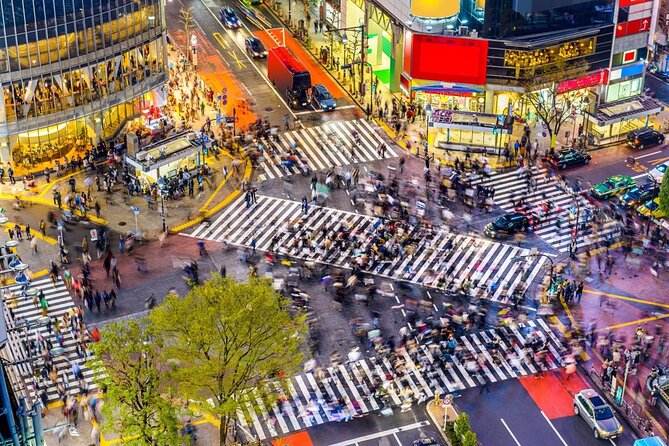
Samurai Photo Shooting at Street in Shibuya
Experience the thrill of becoming a samurai in the vibrant streets of Tokyo’s Shibuya neighborhood. With the Samurai…

Tokyo: Guided Helicopter Ride With Mount Fuji Option
Get set for an adrenaline-pumping adventure above the dazzling cityscape of Tokyo with the Tokyo: Guided Helicopter Ride…

Aomori Full-Day Private Trip With Government-Licensed Guide
Experience the rich culture and historical significance of Aomori, Japan on a full-day private trip with a government-licensed…

Tokyo: Okonomiyaki Classes & Travel Consultations With Local
In the bustling city of Tokyo, a unique opportunity awaits foodies and travelers alike. Tokyo: Okonomiyaki Classes &…

Tokyo: Kawaii Temari Sushi Cooking Class in Asakusa
In the bustling streets of Tokyo’s Asakusa district, a delightfully quirky culinary experience awaits those with a taste…

Nikko Private Tour With English Speaking Driver
The Day Private Nikko World Heritage Tour offers travelers a unique opportunity to explore the cultural wonders of…

Fukushima Exclusion Zone 1-Day Tour: A Great Day Trip From Tokyo
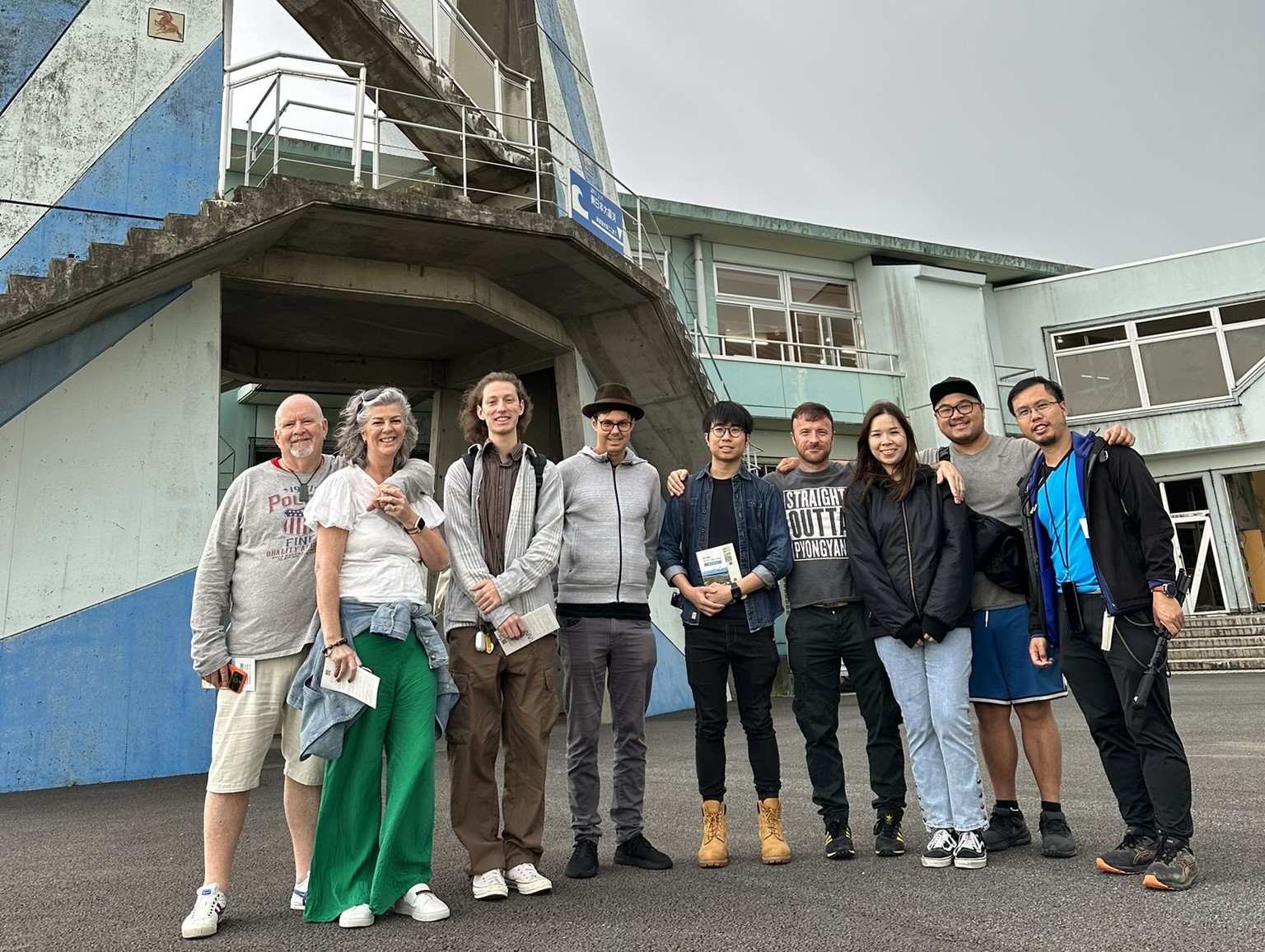
Luca Wirthmann is a student who was born and raised in Frankfurt am Main, Germany. He will live and work in Tokyo as an intern for almost five months in order to get a better understanding of Japanese culture and develop his personality as well as business skills. In the summer of 2024 he will complete his Business Administration studies and plans to do his master’s program abroad. In his free time he’s both playing and watching sports, checking out new museums, and learning new languages.
Embark on a journey to the Fukushima Exclusion Zone area, a trip that will redefine your perspective on the remarkable Tohoku region! This tour is not just an exploration; it’s a testament to the resilience, beauty and enduring spirit of Fukushima. You might have questions about safety , but rest assured, your well-being is our utmost priority. Our safety measures ensure that you can explore Fukushima’s Exclusion Zone with complete peace of mind.
Available dates for our Fukushima Exclusion Zone Tours in 2023 & 2024
Please note that you have to book 2 weeks prior to the 2-Day Tour Dates, so if you are interested in visiting the Daiichi Power Plant in December, please sign up ASAP!
▼Fukushima 1-Day tour from Tokyo

▼We have a 2-Day Tour for those who even want to visit the nuclear power plant!
Introduction: The Past meets the present
What makes fukushima special, fukushima exclusion zone , evacuation orders lifted, tepco decommissioning archive center, futaba station and area, hope farm by yoshizawa (希望の牧場よしざわ), ruins of the earthquake and tsunami: namie ukedo elementary school, coast and tsunami shield, f-bicc shop, reflection: sharing experiences , booking the fukushima exclusion zone 1-day tour, fukushima 2-day daiichi nuclear power plant visit, japan wonder travel tours , other articles you might be interested in.
In March 2011, Fukushima faced a natural and nuclear catastrophe that reshaped its history. Today, we revisit this tale of transformation. Once known for serene landscapes, historic temples, and a close community, Fukushima was shattered by the Great East Japan Earthquake and tsunami, resulting in a nuclear disaster of global significance. The aftermath brought chaos and forced evacuations, but the strong spirit of the people endured.
In the years that followed, Fukushima embraced a journey of recovery marked by resilience, safety measures, and environmental renewal. Visitors now explore “ghost towns”, bearing witness to the impact of natural disasters and human strength. Abandoned areas embraced nature’s resurgence, highlighting the interplay between environment and history. Engaging with survivors reveals their unwavering determination to lower radiation levels and secure a safer future for all. This tour will provide unique insight into ongoing decommissioning efforts, showcasing the areas commitment to safety and progress. Fukushima’s narrative is one of transformation, from tragedy to triumph. Join us and explore the profound changes, the enduring spirit, and the remarkable recovery.
Of course Fukushima is globally renowned for its unlucky incident in March 2011. However, we not only want to show you that Fukushima is now a re-flourished place, but also that it offers endless opportunities for visitors. Fukushima boasts of resilience and recovery, natural beauty, cultural heritage, culinary excellence and scientific progress!
However, we are more than sure that you will have this same image of Fukushima after visiting and seeing it for yourself.
Is Fukushima safe to visit?

Many people are still unsure about visiting Fukushima prefecture because of the possible high radioactivity exposure. To be fair, that is completely understandable considering the large extent the incident had. We are here to tell you that visiting Fukushima is absolutely SAFE! After the nuclear accident, extensive measures were taken to ensure safety, resulting in radiation levels that are now much lower than our daily exposure. In fact, radiation levels in Fukushima are comparable to natural background radiation found globally, making your visit safer than common activities like air travel or a dental X-ray. During our 1-Day tour, exposure is just ~0.2mSv, significantly less than a round-trip flight between New York and Japan, and even less than a single CT scan. Fukushima’s unwavering commitment to safety and transparent monitoring ensures travelers can explore with confidence. Unfortunately there are still a lot of prejudice and stereotypes.
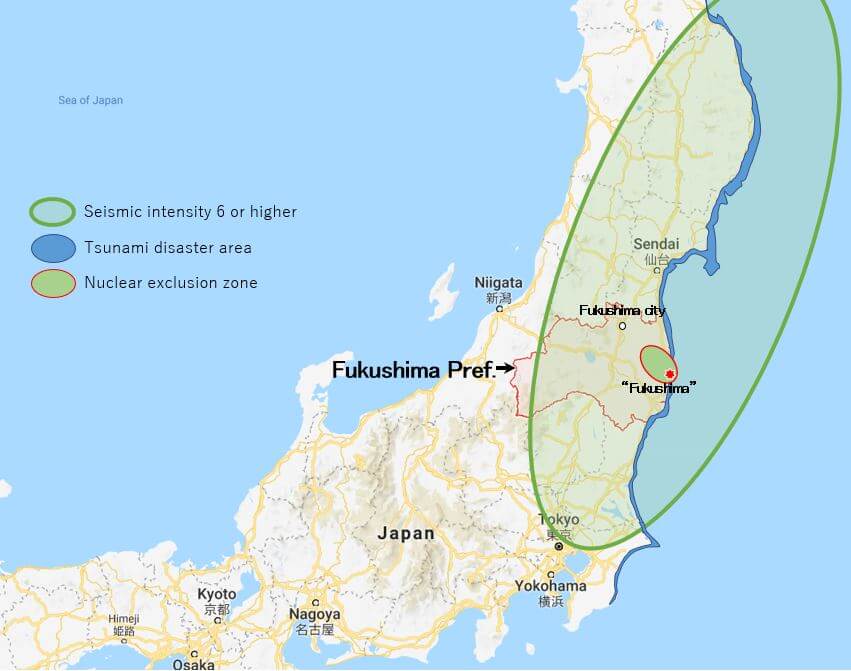
Compared to 10 years ago, the Fukushima Exclusion Zone is now a very small piece of land on the coastal area of Fukushima prefecture. It is about 250 km away from Tokyo and takes about 3 and a half hours to get there by car. The evacuation-designated areas make up a very tiny part of Fukushima Prefecture (only 2.7% of the whole prefecture), but the prefecture as a whole has gotten a negative reputation worldwide from the nuclear accident.

Even though evacuation orders have been lifted in all 11 districts of the Fukushima area (Futaba was the last of the 11 to be lifted in October of 2022), there are still certain sections in some of the districts in which residents are not able to return home. The decontamination is still ongoing and takes a bit more time for areas that are more affected by radioactivity than others.
Though, the people who originally evacuated have already started new lives in other parts of Japan. Nevertheless, there are some people who have already or are planning on moving back to their beloved homes. Preparations for the return are already set in motion and worked on every day!
The Journey begins: Tour Highlights
*Please be aware that the tour itinerary may change depending on availability of facilities, people, the situation of the disaster area, and traffic conditions.

Visiting the TEPCO Decommissioning Archive Center is a rare opportunity to gain an in-depth understanding of the Fukushima Daiichi nuclear plant decommissioning process. Witness the remarkable progress in handling nuclear energy and the safety measures that are paramount. It is not only safe to visit but also enlightening to see the scientific advancements being made. You can even check their “Memory and Record” Exhibition, in which they explain the overall timeline of the accident and give an overview of assessment and lessons. Additionally you can visit their “Situation at the decommissioning site” Museum, in which they give you an overview of the decommissioning work and up-to-date situation at the site.
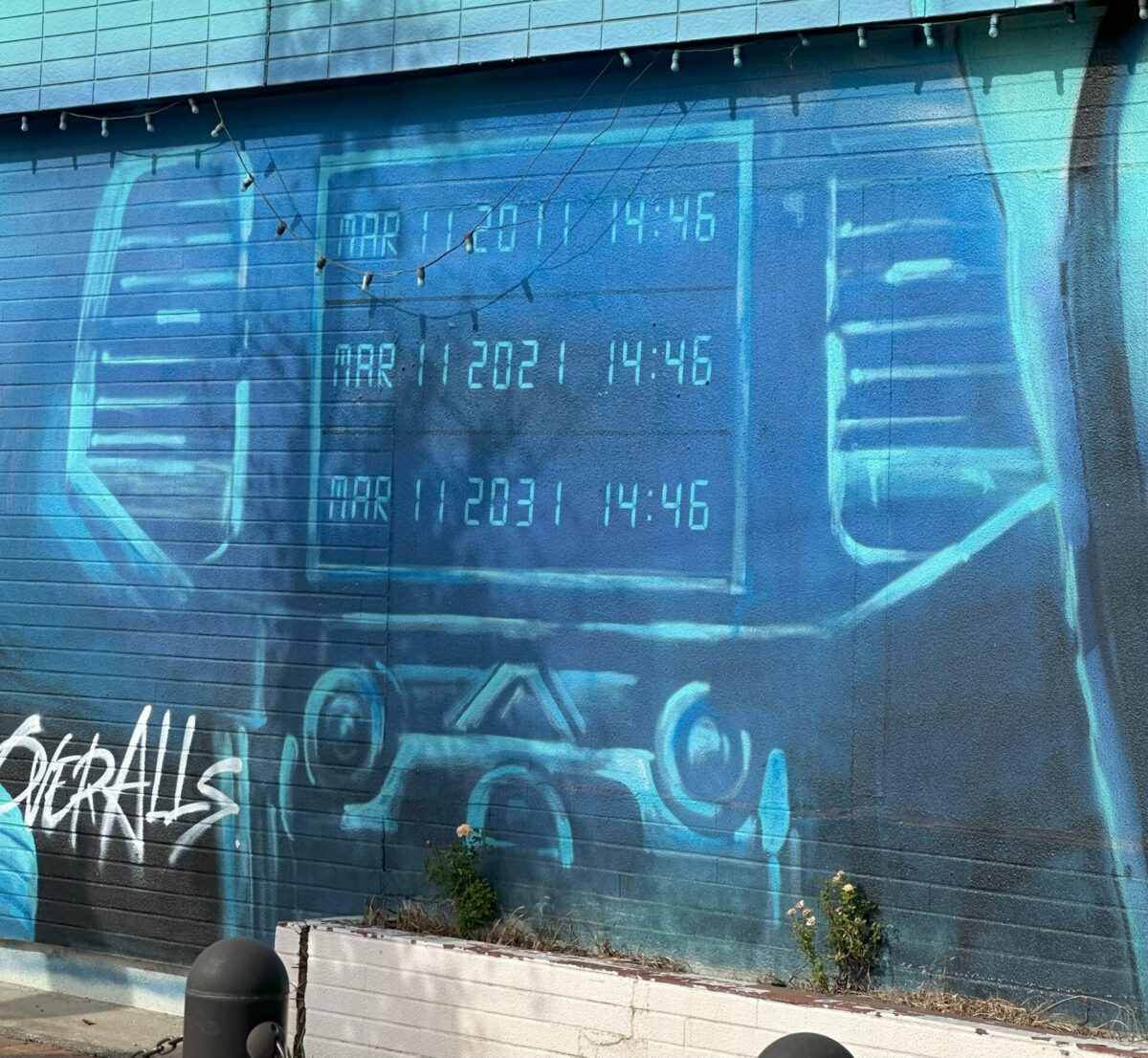
Futaba Station offers a window into the resilient spirit of Fukushima. This area, once heavily impacted by the disaster, has been slowly but steadily rebuilt. Explore the town’s transformation and the dedication of its residents in restoring what was lost. It’s a testament to human strength and recovery.

A visit to the cattle ranch showcases the agricultural side of Fukushima. Engage in conversations with Mr. Yoshizawa-san, a local survivor of the March 2011 incident, and hear his inspiring stories. Get to know why after all these years he still fights for his cows. He gives you an overview about the agricultural, social and political situation during the disaster and how it changed in the last decade.

Explore the ruins of the great natural disaster and reflect on the immense power of nature. It’s a humbling experience to stand among the remains of that fateful day, but also an opportunity to experience how life in the Ukedo Area district changed. Be amazed by how far the tsunami came, see hope and prayer-messages from graduates and residents on the blackboard, the devastated interior and more.

After exploring the Namie Ukedo Elementary School we drove to the now more elevated Tsunami Shield of Ukedo Beach. Now a beautifully calm place but once the start of a terrible fate.
Your journey isn’t complete without a visit to the F-BICC Shop. It’s a place where you can connect with the heart of Fukushima. Discover local crafts , souvenirs and products that represent the culture and heritage of the region . Every purchase supports the community and is a token of your journey through Fukushima’s transformation.
As we already mentioned, we totally understand the hesitancy to visit Fukushima. Nevertheless, following this tour, you’ll find yourself able to confirm that this experience is undeniably eye-opening and leaves a big impression. In just one day we saw so many places and heard so many stories from local heroes, survivors and reconstruction employees that are still motivated to reshape Fukushima. Truly motivational and inspirational to see what impact this incident has had on the mentality of the people of Fukushima. At the same time it was very emotional to hear about stories directly after the incident, and their current life challenges due to the prejudices of the incident. We highly recommend visiting this place as it will uncover the truth of this place and will make sure to clear all the preconceived ideas and stereotypes of this place. So be prepared for an emotional rollercoaster ride full of exciting, inspirational and sad yet interesting stories from real life heroes.
For those interested in booking this 1-day tour of the Fukushima area, have a look on our website below for the available dates in the coming months.
Of course, the decontamination, decommissioning and revitalization processes are still ongoing and it will still be a while before Fukushima regains its peak. But it is truly encouraging to see how far Fukushima has come and to see the high hopes and spirits of the Fukushima People. Seeing it up close gives you the feeling of hope for the future. It may feel like there is little you can do to help but just passing on the correct information and facts about the area and its incident helps in unimaginable ways as there is still a lot of misinformation out there that people often get the wrong idea about the situation.
For those who want to see the Daiichi Nuclear Power Plant up close, there is a 2-Day Tour that covers all the Highlights of this tour plus a visit to the Nuclear reactors of the Fukushima Power Plant. Though, you will still get pretty close to the Daiichi Nuclear Plant on the 1-Day Tour ! Have a look below for more information on the tour!
We hope this article has at least somewhat inspired you to learn more about the Fukushima exclusion Zone and has given you a more detailed and accurate picture of the current situation. We hope that you want to visit this area in person soon!
Check out our Video for further insights!
Japan Wonder Travel is a travel agency that offers guided tours throughout Japan. From private walking tours to delicious Food and Drink tours, we can help you organize the best tours just for you! If you want to explore Japan and learn more about the history and backstories of each area you are visiting, our knowledgeable and friendly English speaking guides will happily take you to the best spots! In addition, we can provide you with any assistance you may need for your upcoming trip to Japan, so please feel free to contact us if you have any questions or need some help!
▶ Tokyo Tsukiji Fish Market Food and Drink Tour Explore the most lively and popular fish market in Tokyo and try some of the local’s favorite street foods and sake with one of our friendly and knowledgeable English speaking guides!

▶ Tokyo 1–Day Highlights Private Walking Tour (8 Hours) There’s no better way to explore an area than taking a tour with a knowledgeable local guide. You will have the chance to learn about the history and interesting background stories of Tokyo, as well as discover some hidden gems which can be hard to do without a guide.

▶ Mt. Fuji Day Trip Bus Tour from Tokyo Experience the breathtaking views of Mt. Fuji by visiting the highlights of the area on our guided sightseeing bus tour! Departing from Shinjuku in central Tokyo, you can travel comfortably to all of the best spots in the area by bus.

▶ Kyoto Private Full Day Walking Tour On this full-day private tour of Kyoto, you will be able to see the highlights of Kyoto in just one day and at the same time develop a deeper understanding of both the culture of the area and Japan as a whole.

Follow us on Instagram , Facebook , Twitter , and TikTok for more travel inspiration. Or tag us to get featured!
Happy traveling!
Stay informed of the best travel tips to Japan, the most exciting things to do and see, and the top experiences to have with the Japan Wonder Travel Newsletter. Every week we will introduce you to our latest content.
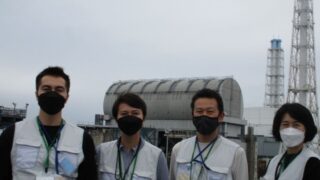
- Popular destinations
- Hidden places in Japan
- Tours and workshop
- Food and drink in Japan
- Itinerary in Japan
- Places to visit in Tokyo
- Food and drink in Tokyo
- Seasonal events
- Tours & workshops
- Tokyo This Week
- Day trip from Tokyo
- Itinerary in Tokyo
- Places to visit in Kyoto
- Food and drink in Kyoto
- Itinerary in Kyoto
- Day trip from Kyoto
- Travel tips
- Accommodation
- Cultural tips
- Transportation
- Tokyo Tours
- Kyoto Tours
- Kimono Rental
- Fukushima Tours
- Mount Fuji Tours
- Tour Package
- Travel Concierge Service
- Media Kit(English/日本語)
T h i s i s a v i r t u a l t o u r o f t h e d e c o m m i s s i o n i n g w o r k u n d e r w a y a t t h e F u k u s h i m a D a i i c h i N u c l e a r P o w e r S t a t i o n . ※Please watch this content in full-screen mode.
You can see on-site map from here.
Updated part of GUIDE video in March 2024

How are the dose levels shown at the bottom of the screen measured?
Dose level monitors (dosimeters) at approximatel 90 locations on site measure air dose rates in real time. The dose levels shown at the bottom of the screen indicate the levels measured by these monitors or measurements taken with portable dosimeters depending on the location. ※Displayed data was taken between January 2021 and November 2023.

ルートを選ぶ Select a Route

- G Green Zone 一般作業服のエリア
- Y Yellow Zone 防護服と半面または全面マスクのエリア
- R Red Zone 防護服と全面マスクのエリア

- G Green Zone Regular Uniform Area
- Y Yellow Zone Protective Clothing and a Full or Half-Face Mask Area
- R Red Zone Protective Clothing and a Full-Face Mask Area
Main work items for the decommissioning underway are picked up and introduced.
What does “1F” refer to?
“1F” is the abbreviation for the Fukushima Daiichi Nuclear Power Station used by workers on site.
What occurred during the accident at the Fukushima Daiichi Nuclear Power Station (1F)?
The Great East Japan Earthquake, which occurred at 2:46pm on March 11, 2011, triggered an automatic scram of Units 1~3 which were in operation at the Fukushima Daiichi Nuclear Power Station (1F), and the cooling of fuel began. The cooling of fuel, for which power was needed, continued using onsite emergency power sources after external power supply was cut off by the earthquake. However, these auxiliary power sources were ultimately rendered inoperable by the tsunami that struck the site following the earthquake, thereby resulting in a loss of cooling functions. After fuel cooling functions were lost, the temperature of the fuel rose causing a melt-down and a significant volume of hydrogen was generated due to the chemical reaction that ensued. In Units 1 and 3, hydrogen leaking from the Primary Containment Vessel accumulated in the Reactor Building and caused explosions. An explosion also occurred at Unit 4, which was undergoing periodic inspection, due to hydrogen that flowed into the building from Unit 3 through pipes.
Please click here for more details. https://www7.tepco.co.jp/responsibility/decommissioning/accident-e.html

What changes has Unit 1 undergone since the accident?
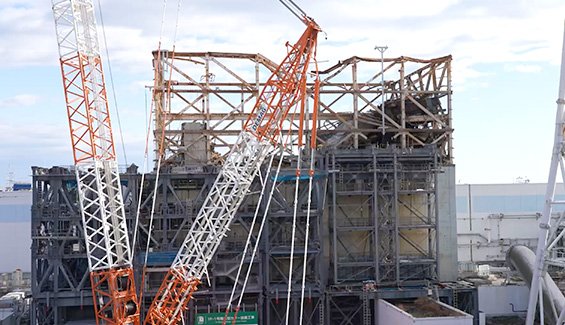
What changes has Unit 2 undergone since the accident?
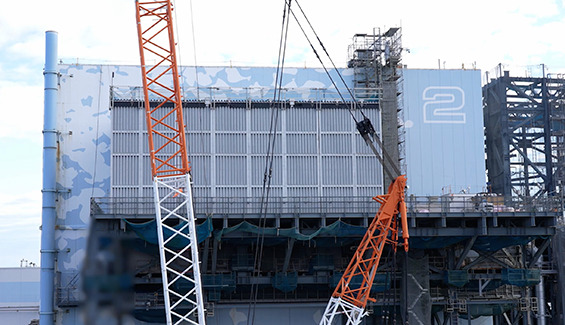
What changes has Unit 3 undergone since the accident?
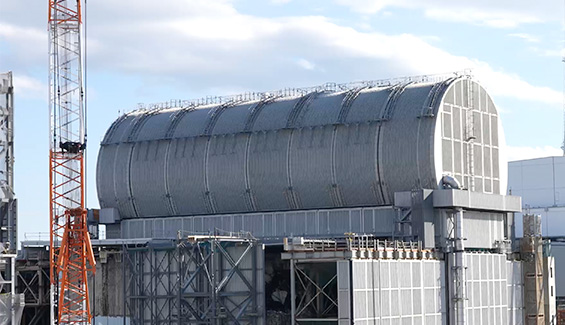
What changes has Unit 4 undergone since the accident?
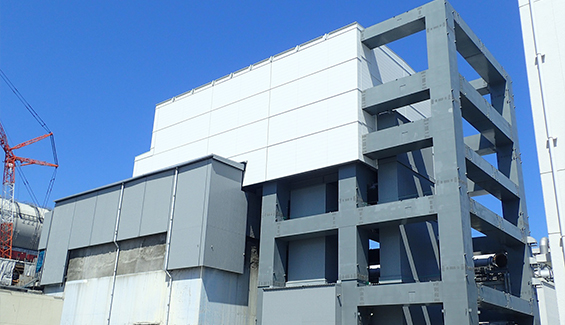
What kind of work is being done at Unit 1?
At Unit 1, the top part of the reactor building was severely damaged during the accident by a hydrogen explosion and rubble from that time still remains at the top of the building. This rubble must be cleared away to remove fuel from the spent fuel pool, so that is the task in which we are currently engaged. Going forward, we plan to complete construction of a large cover by the summer of 2025 in order to prevent the dispersion of dust and will continue to remove rubble from underneath it.

What kind of work is being done at Unit 2?
At Unit 2, we are currently building a gantry for fuel removal and front chamber on the south side of the reactor building in preparation for the removal of fuel from the spent fuel pool. This will be the first unit from which fuel debris will be retrieved and preparations for the commencement of retrieval are underway.

What kind of work is being done at Unit 3?
During the accident a hydrogen explosion occurred at Unit 3. Rubble generated during this explosion that was on the uppermost floor of the reactor building has already been removed, and the removal of fuel from the spent fuel pool began in April, 2019. On February 28, 2021, the removal of all 566 fuel assemblies from the spent fuel pool was completed. These tasks were conducted remotely, and the fuel assemblies are stored safely in the common pool on the premises. We commenced the removal of control rods, etc. that have high dose and remain in the spent fuel pool in March 2023, and have been conducting the work.

What is the barrel-shaped structure on the top of Unit 3?
This is a cover installed to remove fuel from the spent fuel pool. Installation was completed in February 2018. The large cover, which is 53.5m high and 56.9m long, weighs 1,250t and was designed to prevent loads from being transferred to the damaged reactor building.

What kind of work is being done at Unit 4?
During the accident, hydrogen generated at Unit 3 flowed through pipes into Unit 4 and caused a hydrogen explosion. Since the reactor had been shut down for periodic inspection, all the reactor fuel was in the spent fuel pool. Removal of the 1,535 fuel assemblies stored in the spent fuel pool was completed in 2014. This fuel is being stored in the common pool thereby eliminating associated risks.

What is this gray frame installed at Unit 4?
It is a cover installed to aid with the removal of fuel from Unit 4. The frame is made from strong steel beams that support the overhead crane required for removal. Approximately 4,000t of steel beams in total was used for the structure. That’s the same amount that was used for Tokyo Tower. This frame was designed to prevent loads from being transferred to the damaged reactor building.

Where are the removed fuel assemblies taken from Unit 4?
They are taken to the common pool, etc. located on-site and stored appropriately in water.

What is Unit 5 used for now?
Unit 5 is being used to deliberate fuel debris retrieval methods because its Primary Containment Vessel (PCV) is similar in structure to Units 2~4.
Can all the fuel in Units 1~4 be stored in the common pool?
6,799 fuel assemblies can be stored at cool temperatures in the common pool but the common pool is not big enough to store all the fuel. So, fuel which has dropped in temperature is transferred in dry casks to an air-cooled storage facility. Fuel is thus stored in two ways.
Why is fuel stored in the common pool considered to be safe?
Storing all the spent fuel together in the common pool reduces risk compared with keeping it in the fuel pools of each reactor. That’s why we are gradually relocating it to the common pool.
What is the grid-like object seen in the common pool?
This is a fuel storage rack. Fuel is stored in racks so it can be easily moved in and out, and to make it easier to keep track of quantity.
What kind of preparations are underway at Unit 1 in order to remove fuel debris?
Investigations of the Primary Containment Vessel (PCV) were conducted in preparation for fuel debris retrieval. During these investigations we used robots and muons (a type of cosmic ray) to examine conditions and measure dose levels inside the PCV. Going forward, we plan to construct an access route to insert a submersible ROV into the PCV. We will perform a detailed investigation of deposits.
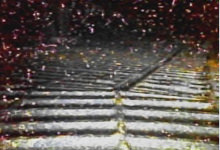
What kind of preparations are underway at Unit 2 in order to remove fuel debris?
In February 2018, an investigation of the inside of the Primary Containment Vessel (PCV) was conducted in preparation for fuel debris retrieval. We successfully took footage from immediately below the Reactor Pressure Vessel (RPV), where it is assumed that fuel debris exists. Some of this footage showed deposits that are assumed to be fuel debris. The investigation also showed that water is dripping from above and keeping the fuel debris at the bottom cool and stable. The following year in February 2019, we conducted a “contact investigation” for the first time during which we touched deposits in order to examine hardness and brittleness. We grabbed deposits that had accumulated at the bottom of the PCV to examine their shape and size, and we also confirmed that the deposits could be moved. We will retrieve a small amount of fuel debris from Unit 2 on a trial basis and have it analyzed by expert agencies.. We opened a penetration hatch of the primary containment vessel in October 2023 and commenced deposit removal work inside the penetration in January 2024 for fuel debris trial retrieval. We will use the telescoping device that was successful during past internal investigations. Thereafter, we will perform internal investigations and retrieve fuel debris with the robotic arm.
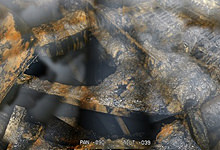
Deposit contact investigation
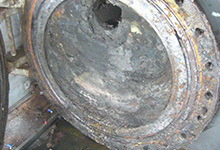
What kind of work is being done at Unit 3 to remove fuel debris?
In order to remove fuel debris, in July 2017, the inside of the Primary Containment Vessel (PCV), which contained 6.4m of stagnant water, was investigated and an underwater robot was used to take footage on the inside. The footage from directly below the RPV, where fuel debris probably exists, revealed structures and deposits that are assumed to have melted and fallen.

What is the freezer room for?
The freezer room is a facility for lowering the temperature for coolant used to create an ice wall (land-side impermeable wall) to -30°C.The coolant passes through pipes that enclose Units 1~4. This underground ice wall, which is 1,500m long in total and extends 30m below the surface, was created to block the flow of groundwater.

Land-side impermeable wall Cross-section of ground
To what temperature is the ground frozen with the coolant?
About -10°C.

Doesn’t the land-side impermeable wall melt in summer?
No, it doesn’t, because the ice wall is underground, which is less affected by the external air. And, coolant temperature is maintained 24/7.
How is the coolant channeled from the freezer room to the area surrounding Units 1~4?
Pipes that encompass Units 1~4 under the ground are used to circulate coolant.

What other countermeasures are being implemented to prevent the generation of contaminated water?
For example, groundwater flowing down from the mountains is pumped up using wells that comprise a groundwater bypass and discharged outside the port. Groundwater flowing near the buildings is pumped up and discharged into the port using sub-drain wells. And, ground surfaces are being paved or faced to prevent rainwater falling on-site from seeping into the ground and becoming groundwater.
What is the high performance multi-nuclide removal equipment for?
This is a facility that houses purification equipment to remove the radioactive materials contained in contaminated water. By passing contaminated water through special filters, this equipment can reduce the concentrations of 62 types of radioactive substances present in contaminated water. Click here for more information on the “treated water*” resulting from the purification of contaminated water.
Note on “Water treated with multi-nuclide removal equipment, etc. (ALPS treated water)” is notated. "ALPS treated water" refers to water that has been purified with multi-nuclide removal equipment (ALPS), etc. until the concentrations of radioactive substances, excluding tritium, meet the government’s regulatory standards (The sum of the ratio of legally required concentrations, excluding tritium, being less than 1). Water that has been purified with multi-nuclide removal equipment (ALPS), etc., but has yet to fulfill the government’s regulatory standards (The sum of the ratio of legally required concentrations, excluding tritium, being 1 or higher) is referred to as, "treated water to be re-purified".
What is tritium?
Tritium is a relative of hydrogen that bonds with oxygen just like other hydrogen and exists as a liquid that has almost the same qualities as water. The energy of radiation emitted by tritium is extremely weak and can travel only approximately 5mm through the air. It can be shielded with a single sheet of paper. Tritium occurs naturally in the environment when radiation from space falls to the Earth in the form of "cosmic rays" and mixes with our atmosphere.
Tritium is also generated through the process of nuclear fission at nuclear facilities in Japan and overseas. Tritium is present in rain water, seawater, and tap water, and can be found inside the bodies of humans and animals. Click here for more information on tritium.
*Tritium generated at nuclear power facilities is regulated and managed in accordance with each country's requirements and discharged into the sea and atmosphere, etc.
What protective equipment do workers wear at the high performance multi-nuclide removal equipment that treats contaminated water?
This is an area for treating contaminated water so workers wear protective clothing and full-face masks.
How much contaminated water can the high performance multi-nuclide removal equipment treat per day?
The entire multi-nuclide removal equipment can treat a maximum of approximately 2,000 tons of contaminated water per day.
What is stored in the tanks?
These tanks contain ALPS treated water, etc. that has been treated with multi-nuclide removal equipment (ALPS), etc. and Sr removed water.
Note on “Water treated with multi-nuclide removal equipment, etc. (ALPS treated water)” is notated. "ALPS treated water" refers to water that has been purified with multi-nuclide removal equipment (ALPS), etc. until the concentrations of radioactive substances, excluding tritium, meet the government’s regulatory standards (The sum of the ratio of legally required concentrations, excluding tritium, being less than 1). Water that has been purified with multi-nuclide removal equipment (ALPS), etc., but has yet to fulfill the government’s regulatory standards (The sum of the ratio of legally required concentrations, excluding tritium, being 1 or higher) is referred to as, "treated water to be re-purified". When referring to both of the aforementioned types of treated water collectively, "ALPS treated water, etc." is used.
What is the capacity of each tank?
There are many types of tanks. A standard tank can hold approximately 1,000m 3 of water.
How many tanks are there on-site?
As of January 2024, there are more than 1,000 tanks on site with the capacity of approximately 1.37 million m³ of water such as ALPS treated water. See the Treated Water Portal Site for more details.
Note on “Water treated with multi-nuclide removal equipment, etc. (ALPS treated water)” is notated. "ALPS treated water" refers to water that has been purified with multi-nuclide removal equipment (ALPS), etc. until the concentrations of radioactive substances, excluding for tritium, meet the government’s regulatory standards (The sum of the ratio of legally required concentrations, excluding tritium, being less than 1). Water that has been purified with multi-nuclide removal equipment (ALPS), etc., but has yet to fulfill the government’s regulatory standards (The sum of the ratio of legally required concentrations, excluding tritium, being 1 or higher) is referred to as, "treated water to be re-purified".
What are the tents around the bottoms of the tanks?
These tents have been set up to prevent rainwater from entering leak prevention dikes. In the slight chance that a tank did leak, this would enable us to accurately measure and analyze the amount of water that leaked.
What is the difference between white, gray and blue colored tanks?
The various tank manufacturers use different colors. There is no difference in performance.
Will the water be stored in tanks forever?
Since August 24, 2023, we have commenced the discharge of ALPS treated water into the sea. This water was stored in tanks, and confirmed prior the discharge that the concentrations of radioactive substances, excluding tritium, meet the government’s regulatory standards after the purification by multi-nuclide removal equipment (ALPS), etc. Therefore, the amount of water being stored in these tanks will gradually decrease over time. See the Treated Water Portal Site for information on the future handling of treated water*.
What do the G, Y and R zones refer to?
Site areas are color-coded based on the level of contamination. The three zone colors are the same as a traffic light: G (for Green), Y (for Yellow) and R (for Red)

From here into the PCV is a Y zone because the reactor was in operation prior to the accident and dust containing radioactive materials that still remain in the PCV may cling to clothing.
What percentage of the entire site is designated as a G zone where regular work uniforms can be worn?
96% of the entire site. The map has been color-coded to show zone demarcations in accordance with radioactive substance contamination conditions.

How is the radiation exposure dose of workers at 1F managed?
By law, workers must be registered as radiation workers before working on site. Each of these workers wears a dosimeter to strictly manage daily radiation exposure doses. Total exposure dose must be less than 50 mSv during a single year, and less than 100 mSv over five years. Currently, work plans are created to reduce exposure doses, and the average exposure dose of workers is sufficiently lower than legal limits. The health of personnel engaged in radiation work is also managed through periodic checkups.
Where is the removed rubble taken from reactor buildings?
After being sorted by type and dose level, rubble and other waste is stored in waste storage buildings and other facilities located on-site.
Currently, we are constructing a volume reduction facility that crushes rubble and reduces its volume in order to store it in a container efficiently, aimed at the completion of construction in FY2023.
What happens to the work uniforms used for work and tours?
Used equipment is stored appropriately as waste. In order to reduce volume it will be incinerated step-by-step, and ashes generated will be stored.
What will be built at the site preparation related to waste treatment?
Facilities to incinerate, compact and store waste will be built here.

When will the construction of these facilities planned at the site preparation be completed?
The Miscellaneous Solid Waste Incineration Facility and the volume reduction facility have already been put into use. The other facilities will be put into use one-by-one as preparations are completed.
How large is the site preparation related to waste treatment?
The facilities will be built in an area approximately 14ha in size.
What is the difference between radiation, radioactivity and radioactive materials?
Radiation is like a strong ray of light. If we use a flashlight as an analogy, radioactive material is the flashlight and the radiation is the light emitted by the flashlight. “Radioactivity” refers to the ability of a substance to emit radiation, which is analogous to the ability of a flashlight to emit light.

How is the radiation exposure dose of tour participants managed?
During a tour each visitor is provided with a dosimeter to attach to their clothing. The tour route has been set to limit the maximum total radiation exposure dose to 0.1mSv or less, which is lower than the exposure dose received during a roundtrip flight from Tokyo and New York.

How are the radiation levels shown at the bottom of the screen measured?
How high were radiation levels in the main control room at the time of the accident.
Six workers were confirmed to have been exposed to more than 250mSv, which is the dose limit for workers responding to an emergency. All of these workers were either operators monitoring instruments or electricians/instrument system engineers in the main control room. The average annual dose at the Fukushima Daiichi NPS before the accident was 1.4mSv/yr (FY2009).
What is this steel tower near Unit 1?
It is an exhaust stack which was used before the accident as part of the reactor building’s air-conditioning system to vent air outside. The exhaust stack is no longer in use. The seismic resistance of this exhaust stack exceeds requirements, but to eliminate the risk of it falling over the top 60m of the stack was dismantled in cooperation with a local contractor. This task was completed on May 1, 2020.

What is the gray box attached to the front of the Unit 2 reactor building?
This is called an anticum and was constructed to investigate the roof of the reactor building. The anticum prevents dust, etc. that contains radioactive materials from being dispersed into the environment when boring holes in the wall of the reactor building. The anticum is 30m high, 38m long and 16m wide.

Can workers enter the uppermost floor of Unit 3?
They can enter the uppermost floor area for short times. In this area, where radiation levels remain high, remote-controlled cranes were used for decontamination and the installation of radiation shielding. These preparations enabled workers to enter the top floor.
Are units 5 and 6 currently generating power?
No. The decision has already been made to decommission Units 5 and 6.
What is the layout of the reactor buildings?
This is a simplified diagram of the Unit 1~5 reactor buildings. Fuel rods are put inside the pressure vessel, and the heat generated by them is used to produce electricity. The spent fuel pools are used to store unused fuel and also to cool spent fuel that continues to generate heat.

What is the condition like in Reactor Pressure Vessel when electricity is generated?
In nuclear power generation, water in the reactor is boiled using the thermal energy generated from the nuclear fission of Uranium. The high temperature and highly pressurized steam that is produced turns a turbine that generates electricity. In Unit 5, steam pressure was approximately 7Mpa and steam temperature was approximately 286 degrees Celsius in the Reactor Pressure Vessel (RPV) when generating electricity.
What was the main control room originally used for?
This facility was originally used to monitor and operate the reactors and turbines, and also control radiation. It is currently not in use.
What is under construction alongside the Unit 2 reactor building?
It is a platform used for removal of the spent fuel. The construction will be completed in FY2024.
How is ALPS treated water discharged?
ALPS treated water which has been confirmed that the concentrations of radioactive substances, excluding tritium, meet the government’s regulatory standards for discharge into the environment is transferred to the dilution facility located close to the sea through transfer pipes designed to reduce the risk of leaks. In the dilution facility, ALPS treated water is mixed with a large volume of seawater taken in from outside the port. ALPS treated water has been diluted with seawater more than 100 times, and then transferred to the discharge vertical shaft. After that, it passes through a discharge tunnel and is discharged from a discharge outlet approximately 1km offshore. During discharge, we confirm that there are no safety issues by monitoring tritium concentrations calculated from the dilution ratio continuously and measuring the concentrations in discharging water daily. Furthermore, we will measure the tritium concentration in water in the vertical shaft prior to discharge once a year.
What measures have been implemented to handle an emergency during the discharge of ALPS treated water?
Flow meters are continually used to monitor ALPS treated water and seawater, and if an abnormality is detected emergency isolation valves will automatically close thereby terminating sea discharge. Emergency isolation valves have been installed in two locations just in case one does not work. Furthermore, one of the emergency isolation valves has been installed inside of the seawall so that sea discharge can be stopped even in the event of a large tsunami.
How do you examine the environmental impact of radioactive substances?
In order to examine the radioactive impact of radioactive substances on the environment from the Fukushima Daiichi Nuclear Power Station, we measure the concentrations of radioactive substances in seawater and marine products. Monitoring is also implemented by TEPCO, Fukushima Prefecture, the Ministry of the Environment, the Nuclear Regulation Authority and the Fisheries Agency. The results are being disclosed and disseminated on our website “Overarching Radiation-monitoring data Browsing System” .
The Fukushima Daiichi Nuclear Power Station is steadily being decommissioned with the cooperation of a great many people. An important part of the decommissioning process is conveying what conditions in the field are like to as many people as possible in an easy-to-understand manner. That is why we created INSIDE FUKUSHIMA DAIICHI. This virtual tour allows anyone, anywhere to experience what it’s like to be on the front lines of decommissioning. March, 2024
- Destinations
Fukushima Tour: Unforgettable Day Trip from Tokyo
Walk around Fukushima within 20 km from Fukushima Nuclear Power Plant
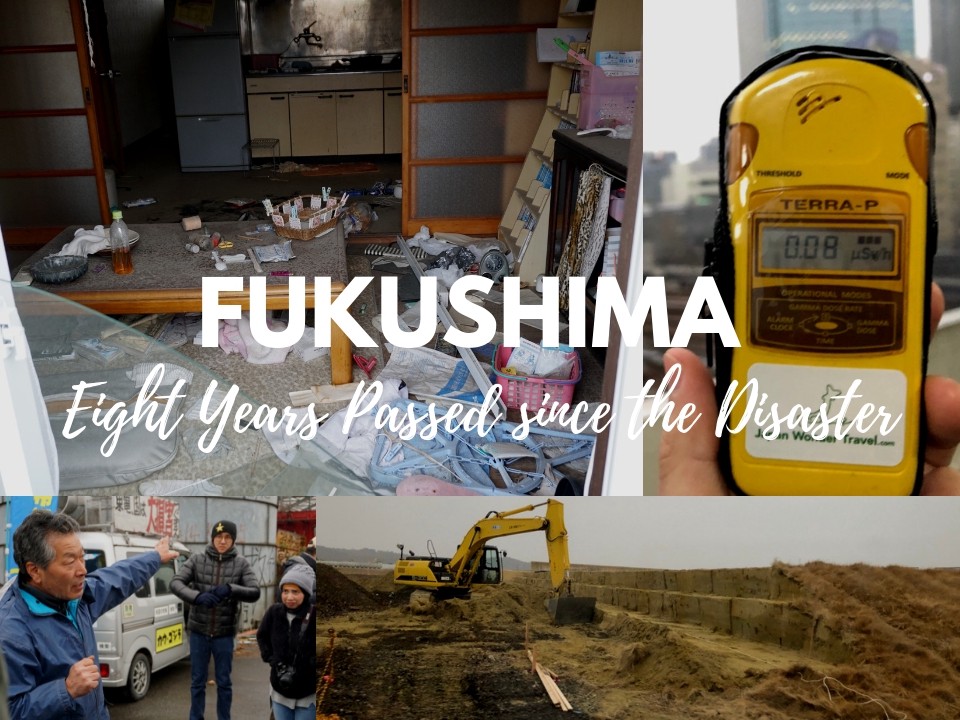
I just took part in a day-trip tour with about 20 participants to Fukushima disaster area where the Great East Japan Earthquake and the mega tsunami attacked in 2011. Fukushima Prefecture is one of the most-damaged area by the disaster in Japan. The tour took us to two towns of east Fukushima near the coast where the Fukushima Daiichi (number 1) nuclear power plant are located: Namie (浪江) and Tomioka (富岡) towns.
*Please note that this article contains affiliate links.
It’s ashamed to say as Japanese but I had not known so much about the Great East Japan Earthquake on the 11th March, 2011. Finally, I got the chance to visit the disaster-hit area in Fukushima with this Fukushima disaster area day tour from Tokyo by Japan Wonder Travel . We reached within only 2 or 3 kilometers from the Fukushima Daiichi nuclear power plant.
There has been No-Go zones under the evacuation order since the earthquake occurred and the Fukushima Daiichi nuclear power plant spread radiation. Decontamination activities has been going on in Fukushima, but some areas are still regulated to enter for relatively high radiation dose The guides carefully led us to several spots we could see the remains of the disaster and hear stories by some local residents (of course, guides translate them into English).
This tour to Fukushima is held by the people who want to do something to support the disaster-hit area in Fukushima and really want more people to find out how things really are there. Today, I’d like to share my experience of this tour to Fukushima near the Fukushima Daiichi nuclear power plant.
▶︎Fukushima Daiichi Nuclear Power Plant Visit 2-Day Tour from Tokyo
Departing from Tokyo Station
This tour started from Tokyo Station on 8:00 and it spent 3.5 hours getting to Fukushima area by van. The participants including me were welcomed by the friendly guides Takuto-san and Yoko-san who can speak both English and Japanese. All of us gave brief self-introductions and I found out they were from various countries such as the United Stated, UK, France, Norway, Indonesia, Nepal and so on.
Learning about Fukushima and radiation
After that, Yoko-san explained about the itinerary and radiation dose in Fukushima with a handout. I had known little about the radiation, nevertheless, the explanation made me feel relieved since I found out the radiation dose of the locations we would visit were as low as it had no affect on the human body. For your information, the amount we are exposed to by flight from Tokyo to New York is a hundred times as much as the one in the areas like Namie and Tomioka.
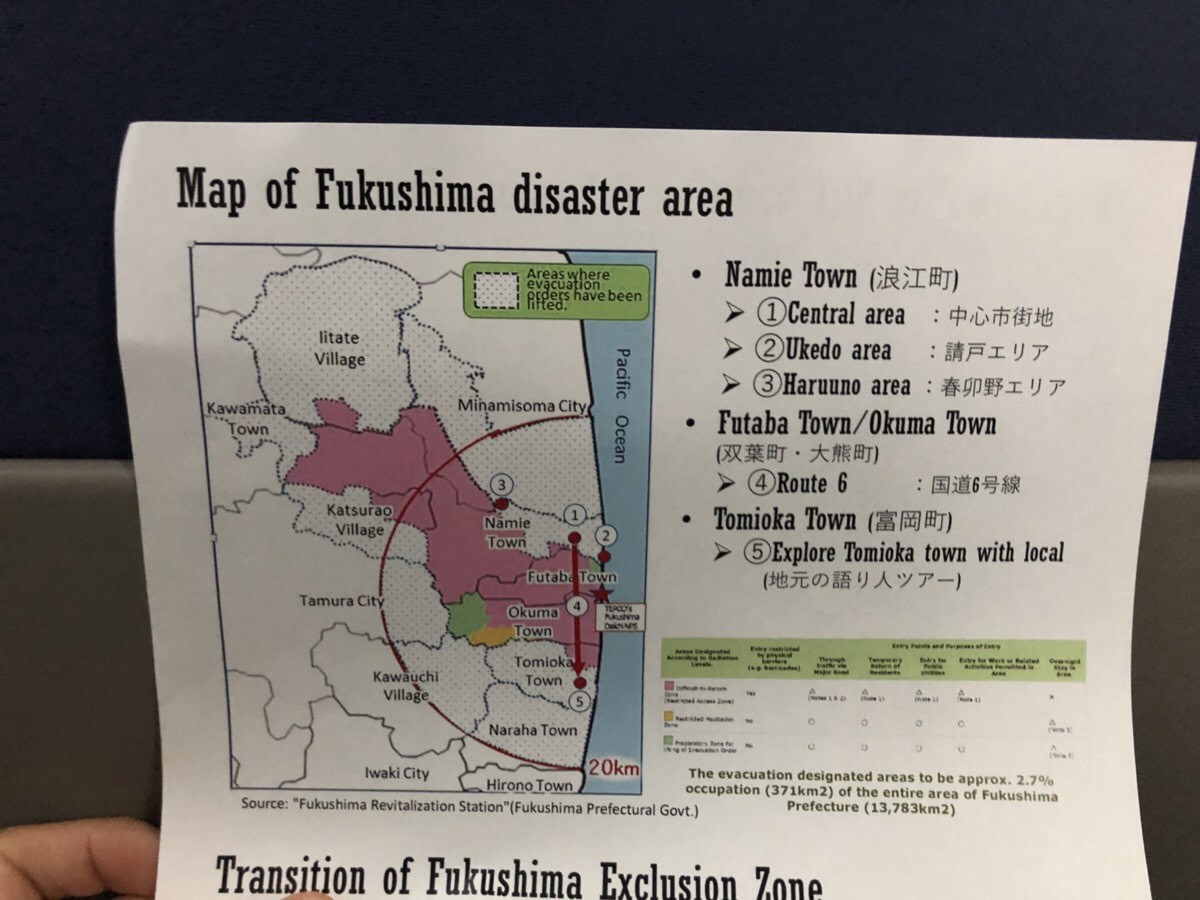
According to the map of Fukushima disaster area on the handout, the restricted area under the evacuation order is divided into there zones: Difficult-to-Return Zone, Restricted Habitation Zone and Preparatory Zone for lifting of Evacuation Order. The pick-color zone on the map has been the most contaminated, and we could only see the area from inside of the car. The distribution looks a strange form, and it shows the direction of the wind to the northwest on that day when the nuclear power plant exploded.
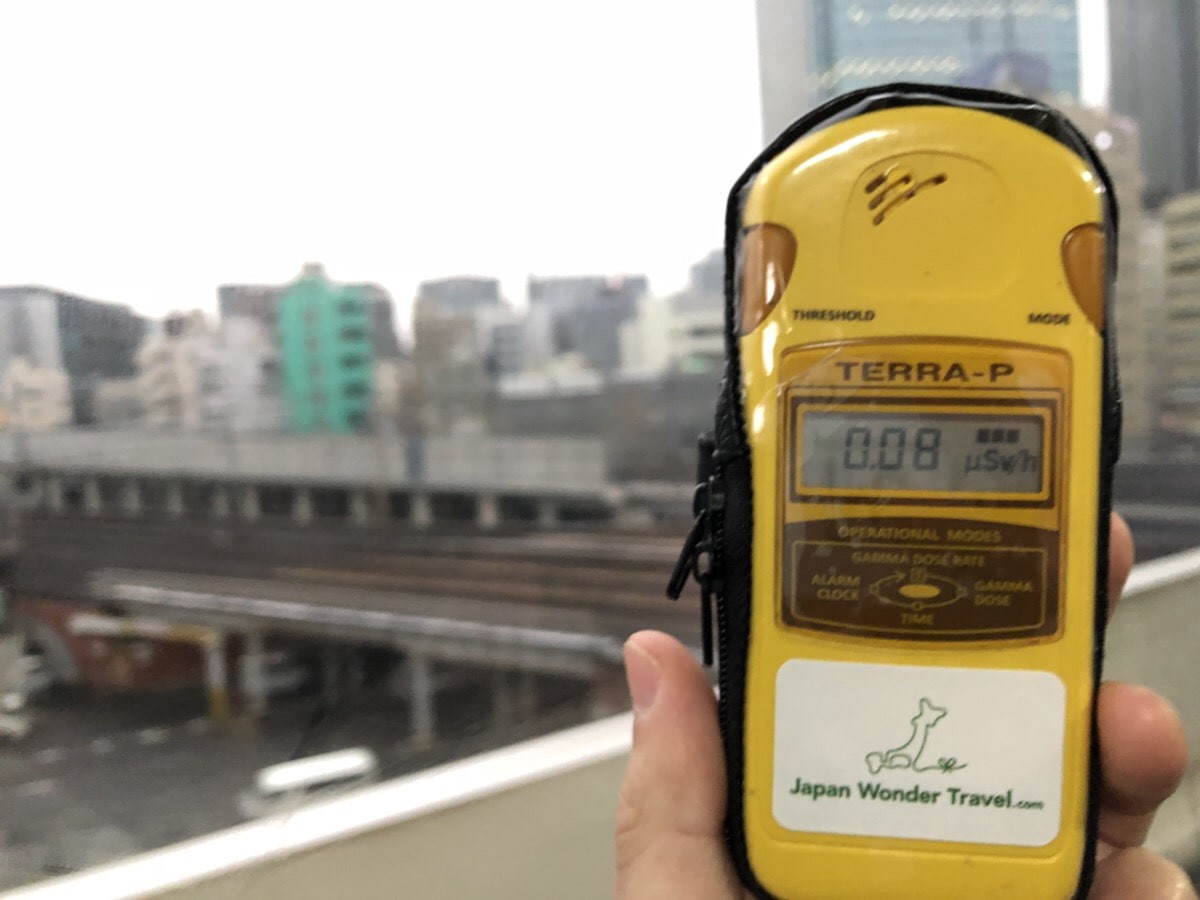
Additionally, each of us got a Geiger counter to measure radiation. In Tokyo, the Geiger counter showed this lower radiation dose (around 0.08–0.1 microsievert/h).
Starting from Namie Town
We arrived at Fukushima area and started our journey from Namie, which is located within 20 kilometers from the Fukushima Daiichi nuclear power plant. We turned on the Geiger counter and it said 0.21 microsievert/h in front of Namie Station. The central zone in Namie we walked around is the area where the evacuation order has been already lifted. There were many ruined houses and school in untouched conditions in the area since the earthquake, where we understood how hastily the residents and students evacuated.
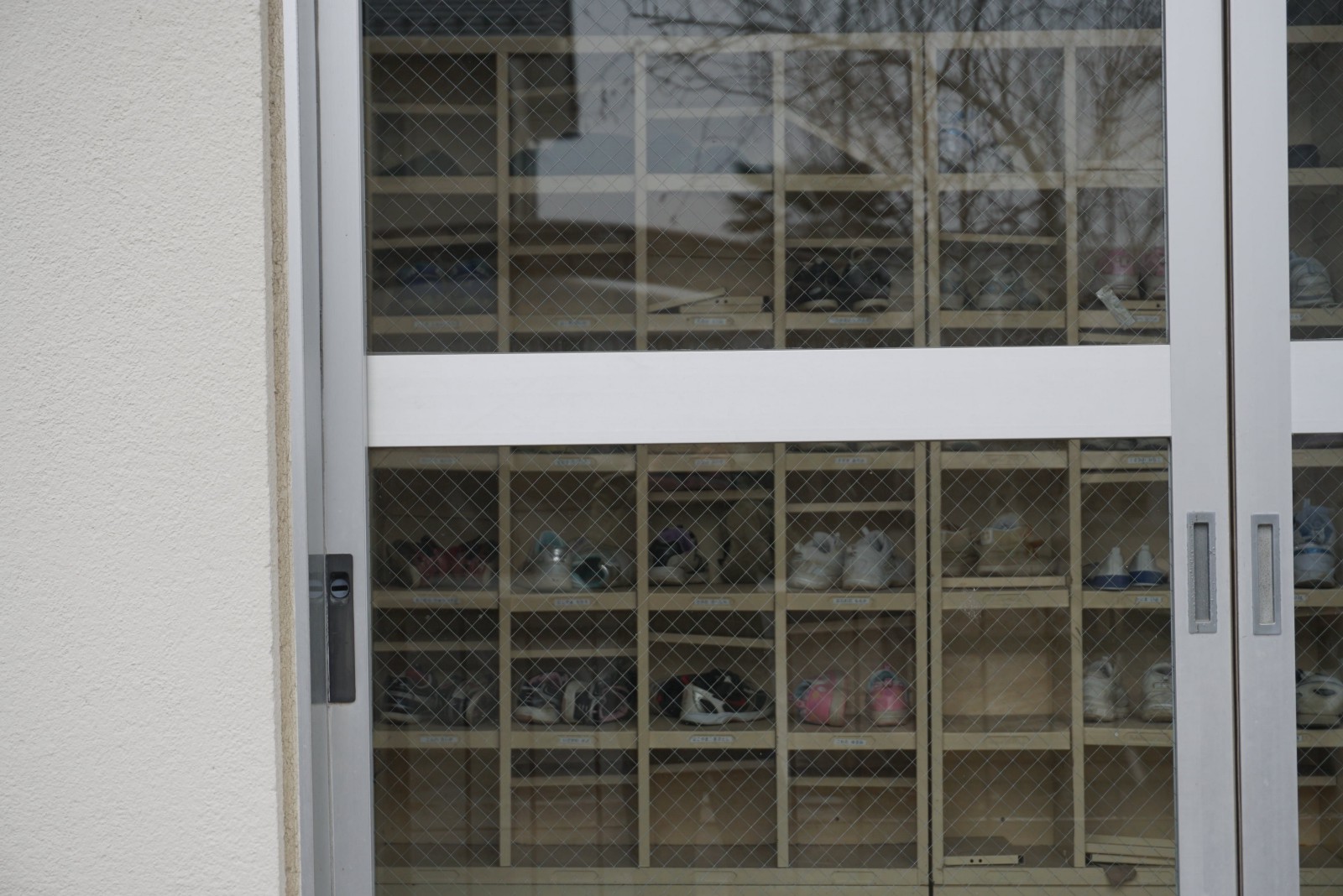
Students take off their shoes inside a school in Japan, and their shoes still remained at shoe lockers of the school there.
Communicating with local people in lunch time

After strolling in the centeral area, we had lunch at a small plaza in Ukedo (請戸) area in Namie where several small restaurants and shops gathered. Fortunately, a local festival was held at the plaza on the day. And, I met and talked to some local people who moved to other areas for the evacuation order and came back to Namie temporarily. There were about 21,000 residents in Namie before the disaster but are only 850 now. I heard that many of them wanted to return to their hometown.
Visiting a farm to hear the story from a local cowboy
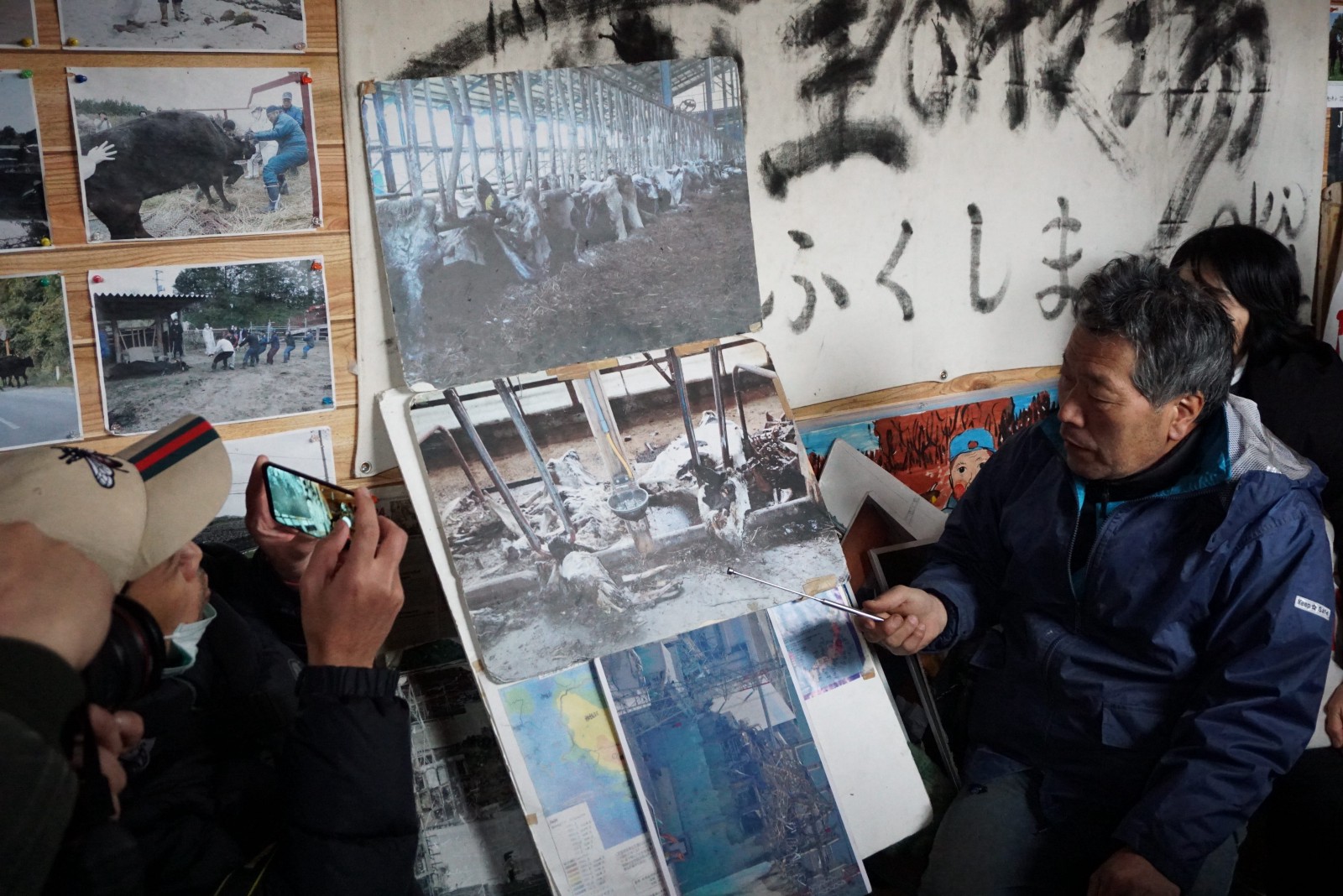
We visited a farm owner (who was called “Cowboy”) at first in the afternoon to hear his story about the earthquake. Many participants told that this farm with his talk was the best impressive spot in thus tour. He made a graphic statement about the days just before the disaster: the explosion sound of the nuclear power plant, cattle dying from starvation (nobody could feed them for evacuation) and so on. He supported to abandon nuclear power generation based on his experience.
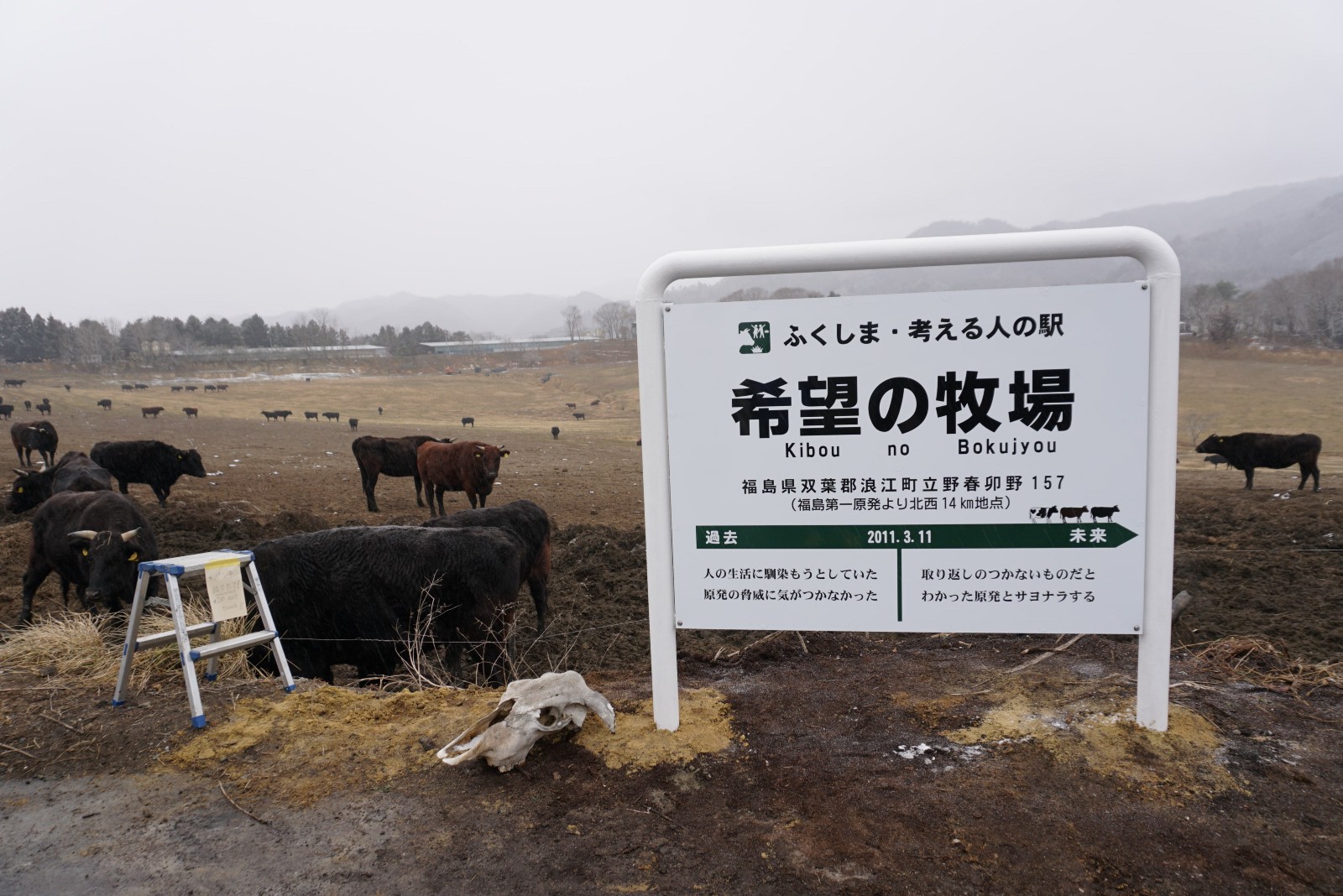
I was really shocked by his story and clearly understood that stable electricity in Tokyo was supplied from the Fukushima’s nuclear power plants. We including Tokyoite should not forget this whether we support the current energy generation policy or not. The vast farm housed a number of cattle which were unsalable since they were exposed to radiation. However, he claimed to live there with them in the future as well.
Miraculous Story at Ukedo Elementary School
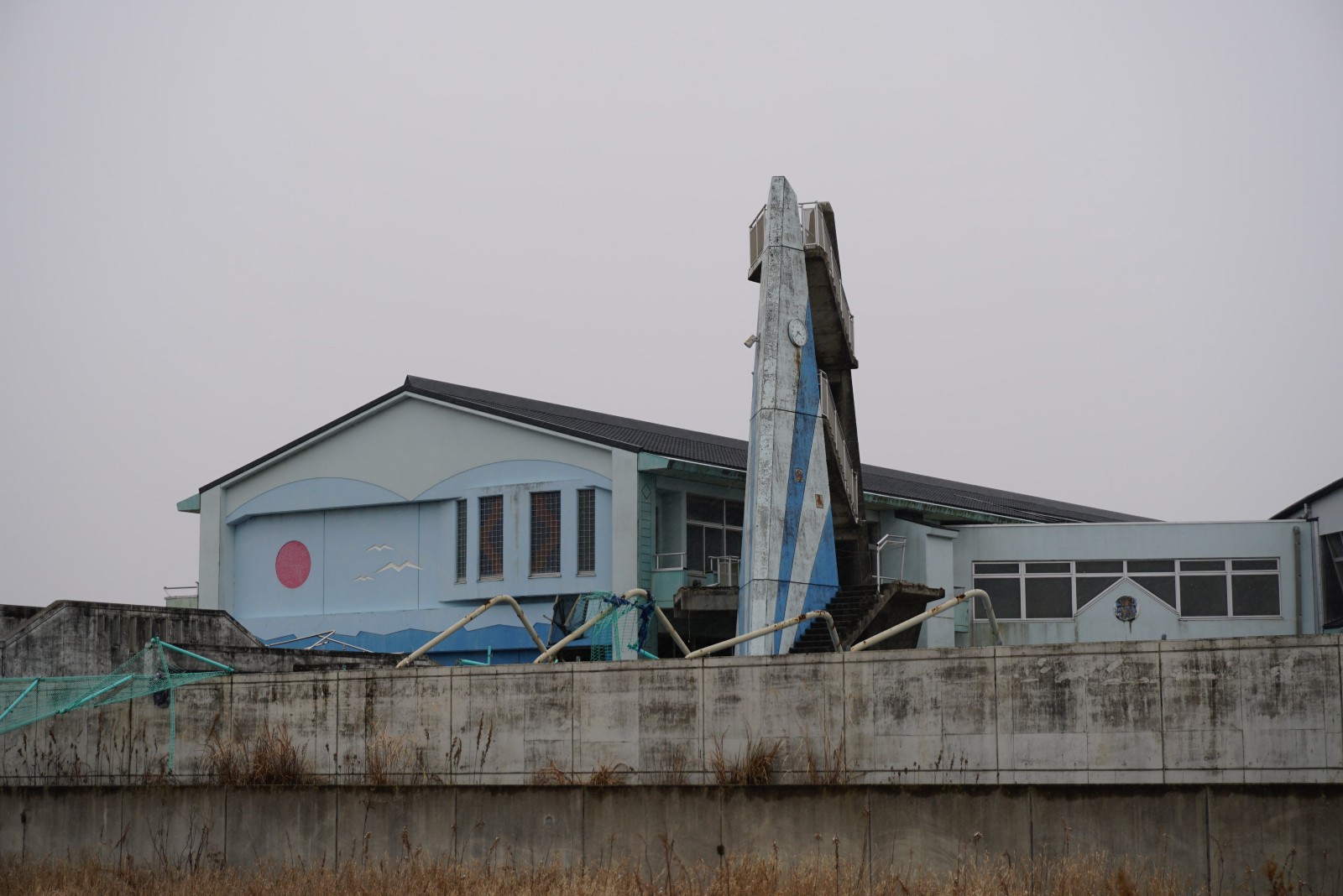
The next destination was an elementary school along the coast in Ukedo. Before the school, the guide Yoko-san told the story of the school on the day when the maga-tsunami hit the area. Surprisingly, all of the students survived the tsunami though it was located just near the seacoast. They fled for refuge to a rising ground, which was an exceptional decision. Heading for the playground is standard policy in emergency situations such as earthquakes and fires in Japan. The school became a famous disaster spot for the story.
The Geiger counter said 0.08–0.1 microsievert/h (almost same as Tokyo) near the school which was located within only 6 kilometers from the Fukushima Daiichi nuclear power plant.

On the other hand, it showed around 3 microsievert/h on National Route 6 on the way to the next destination town Tomioka.
Tomioka Town hit by the mega-tsunami
We joined up with the other local guide Hiroko-san who was born and raised in Tomioka area. She loved her hometown but had to evacuate to safer places just after the 11th March, 2011, and then, she came back to Tomioka finally. She introduced how the disaster had changed the town but it also had a great hope with some tourist attractions and warm local people (100 people are registered as a resident of Tomioka so far).
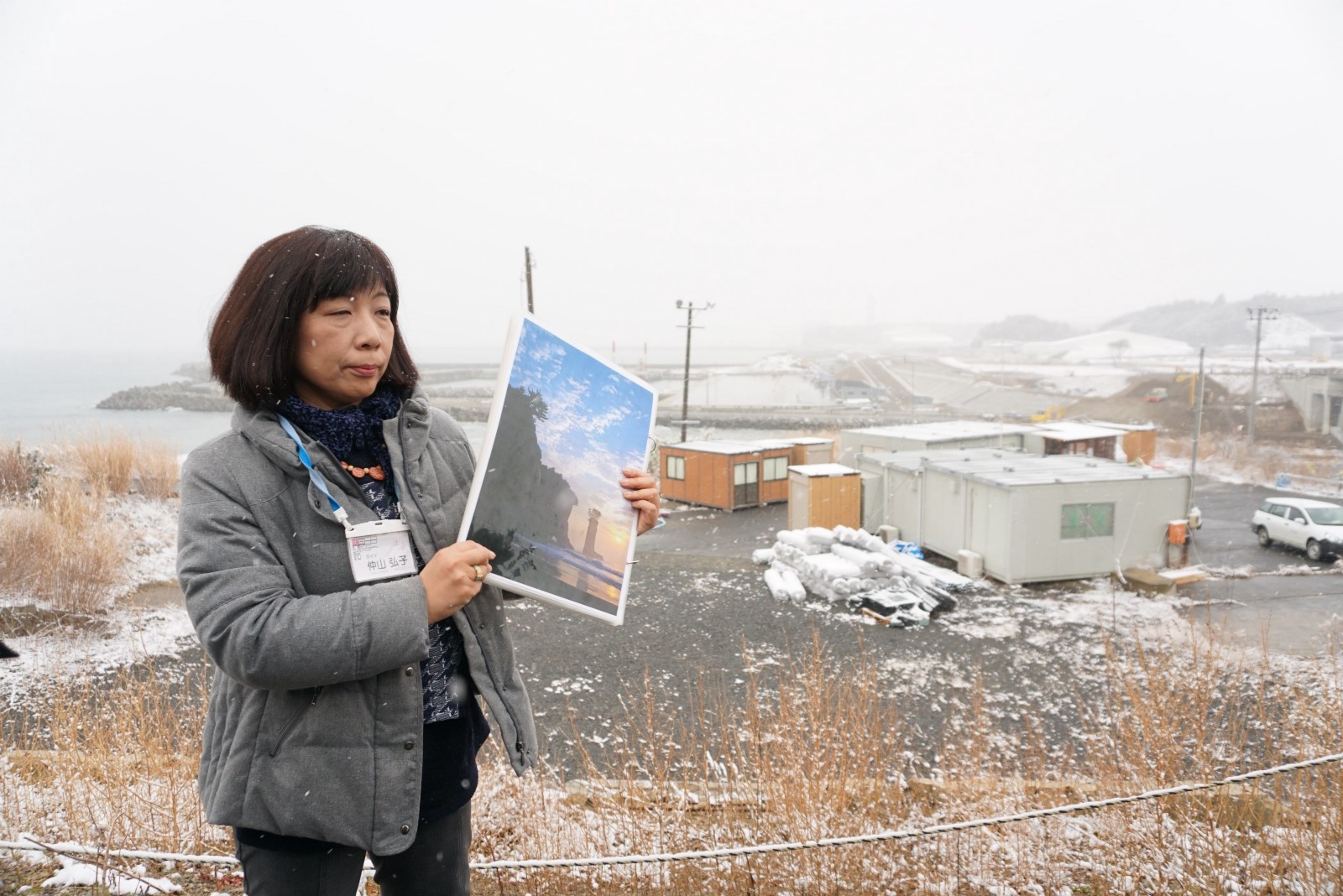
She led us to a coastal point near Tomioka Station first. The place where we stood like this photo above was swamped by the mega-tsunami although the place was located at a height of 20 meters above sea level. Nobody living around there did not think tsunami came to that high ground.

We were guided about the building of Tomioka Station. Due to radiation exposure, the station had been left untouched for 3–4 years since the tsunami had destroyed it. After that, it started to be decontaminated (and the JR station is available now). At the same time, the problem of decontamination was where the wastes should be disposed. I saw lots of the wastes covered by black container bags put from place to place in the towns. Hiroka-san and the residents had moaned about the symbolic color of Tomioka changed from pink to black. Why pink originally?
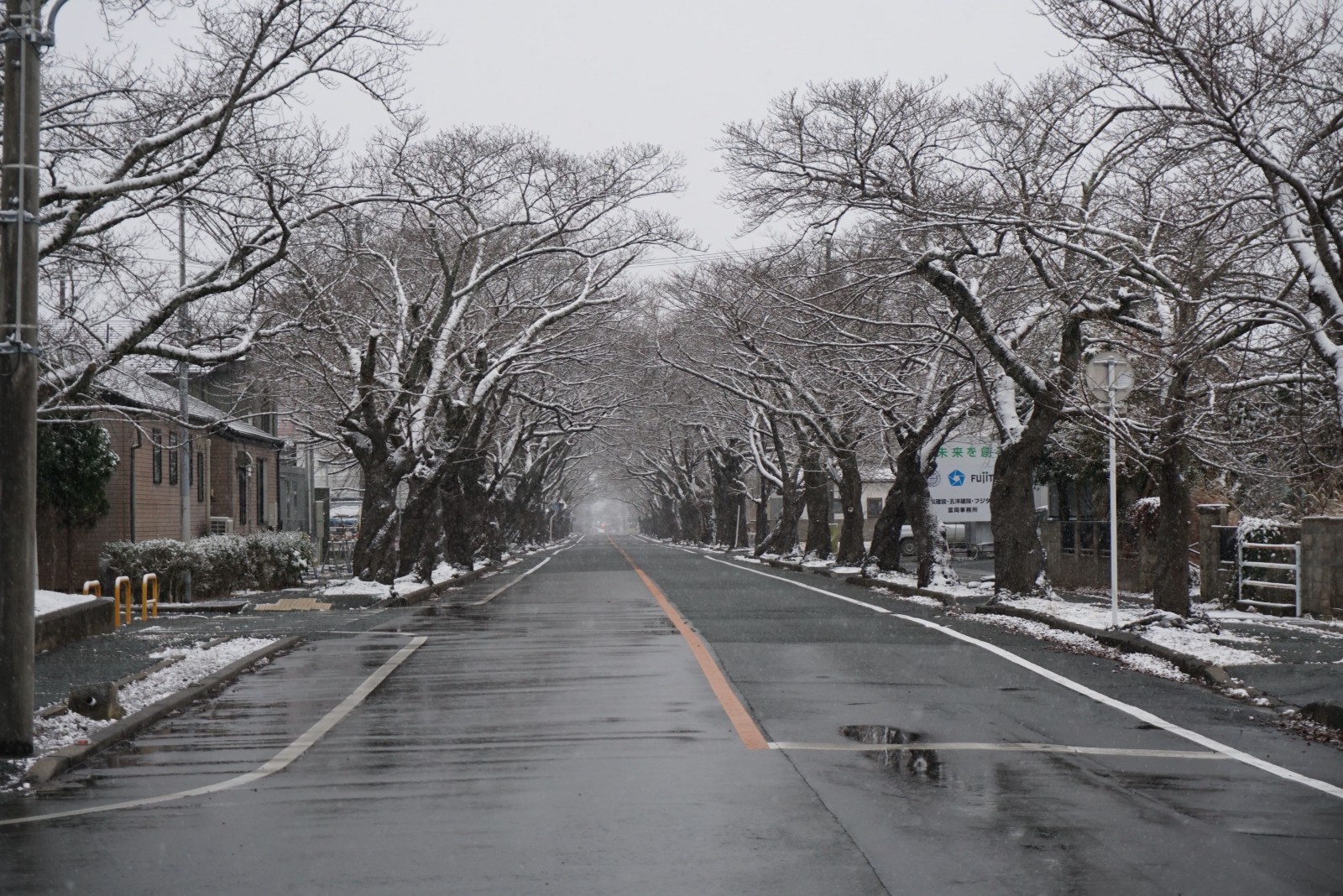
Tomioka is famous as one of the best places to see cherry blossoms in Fukushima. We visited the spot and saw a large number of cherry blossom trees standing along the 2.5 kilometers long street. They forms a long cherry blossom tunnel in spring, however, they are largely designated as No-Go zones now. My visit in the early February is a little earlier than the cherry blossoms fully bloom, but I though the beautiful flowers would change back the color of the town into pink.
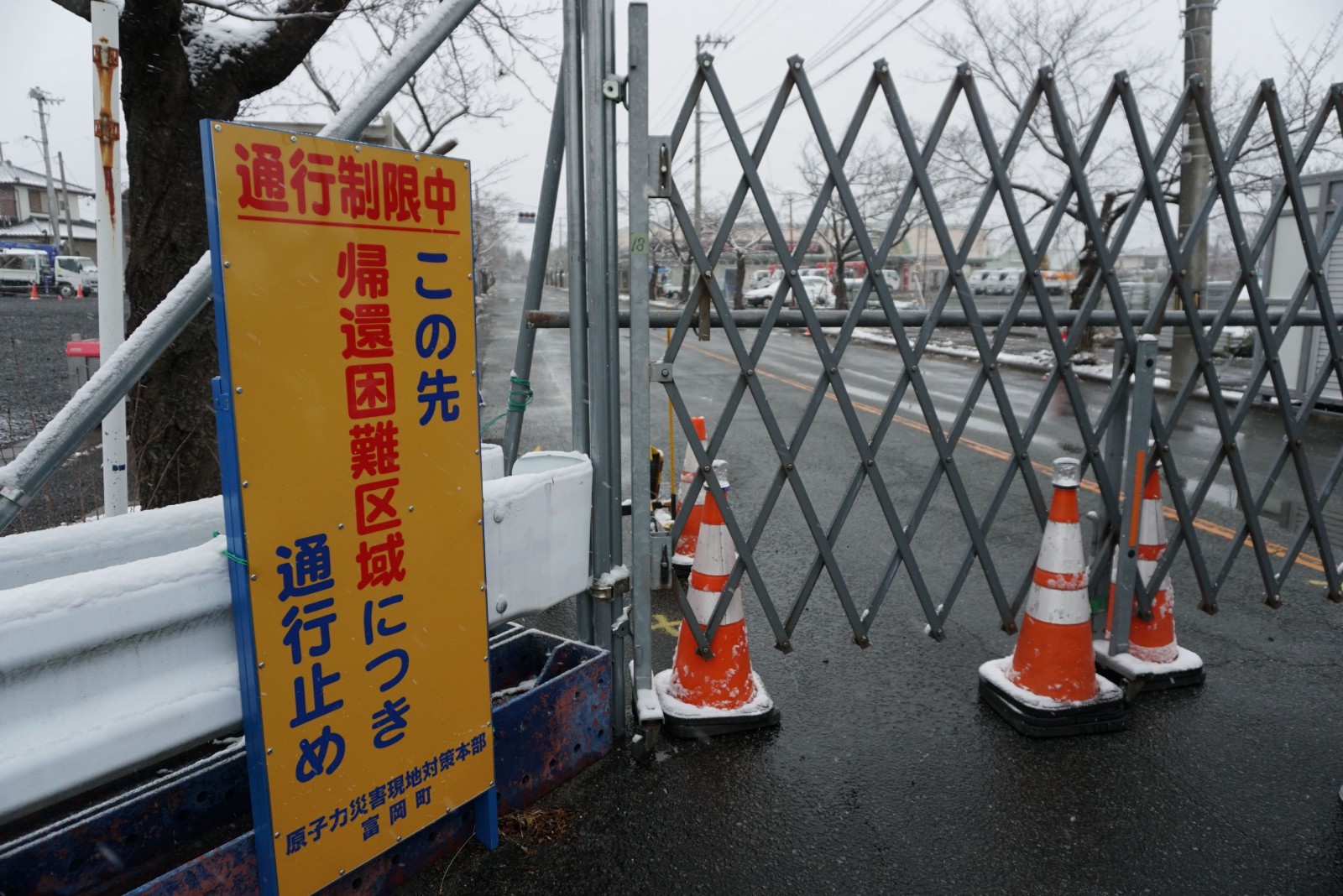
There are a pile of problems to solve in Tomioka as Hiroko-san guided us, nevertheless, I certainly realized that the residents were trying to find the way forward. Wish I will go there again in the cherry blossom season, and it’s highly recommended to join the tour especially in spring.
Farewell Fukushima…
Finally, it was the time to leave Fukushima back to Tokyo… There are still numerous traces of the disaster although about 9 years have passed since the Great East Japan Earthquake and the Fukushima Daiichi nuclear power plant accident. Decontamination in major areas in Fukushima is going on.
This tour gave me the one and only experience which was thought-provoking. I see and hear these voices so much everywhere both online and offline: “Is Fukushima safe now?” or “I’m for/against nuclear power generation”. Rather than those discussions, I think that it is more important for as many people as possible to see the real condition of Fukushima with their own eyes.
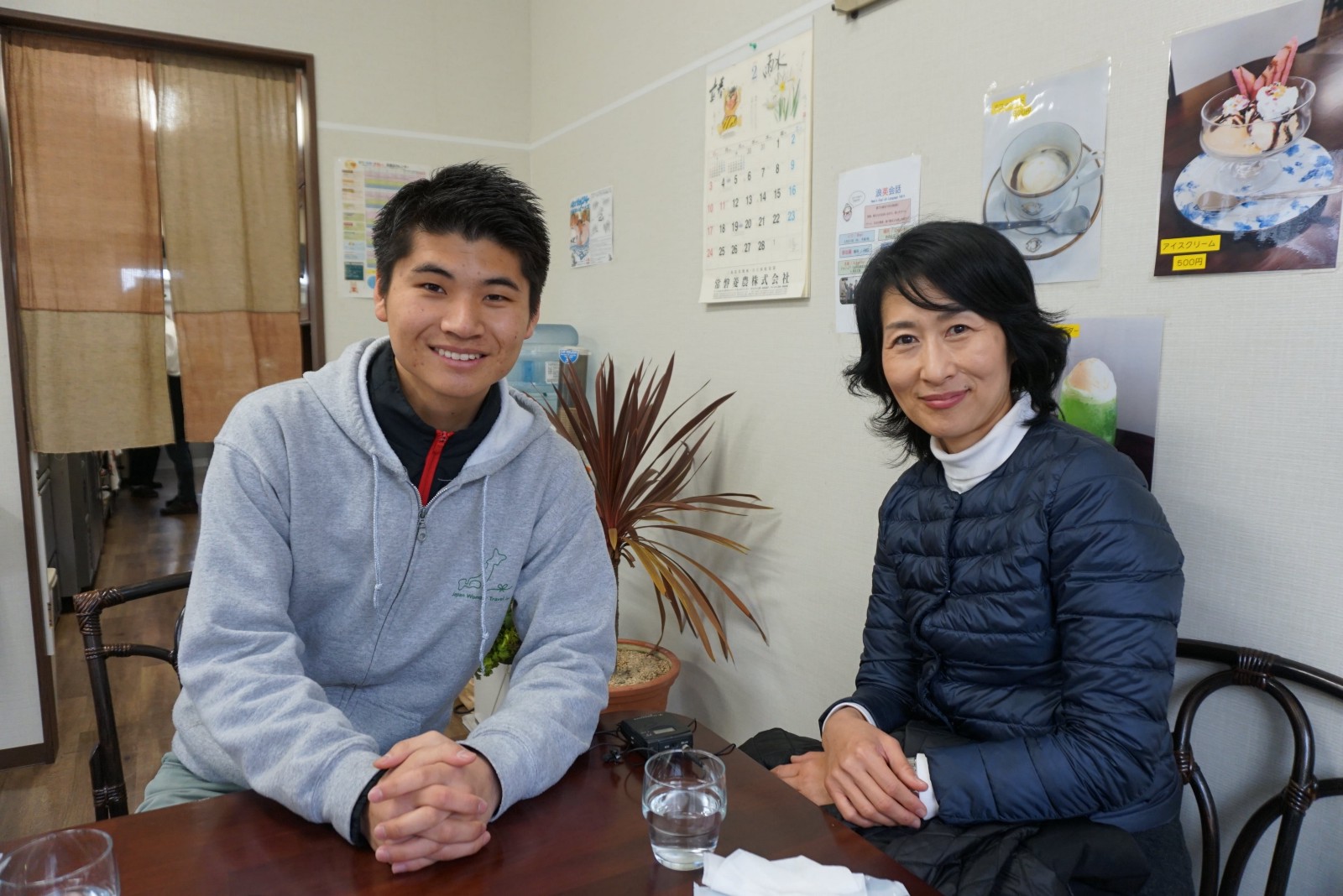
Thank you very much everyone in this tour including Takuto-san, Yoko-san and Hiroko-san. This Fukushima tour is quite friendly for everyone with kind English-speaking guides and simple transportation from Tokyo. It is also interesting to exchange opinions on Fukushima with people from various countries.
Here are also a couple of tours that take place in Futaba town(双葉町) which is the town right next to Namie.
The first tour is a walking tour that will take you around Futaba town which is one of the most affected towns by the nuclear disaster. Not only will you learn about the impact that the disaster had on this town, but you will see how the town is currently doing. You will also hear many stories regarding the former inhabitants and how it was to experience the nuclear disaster.
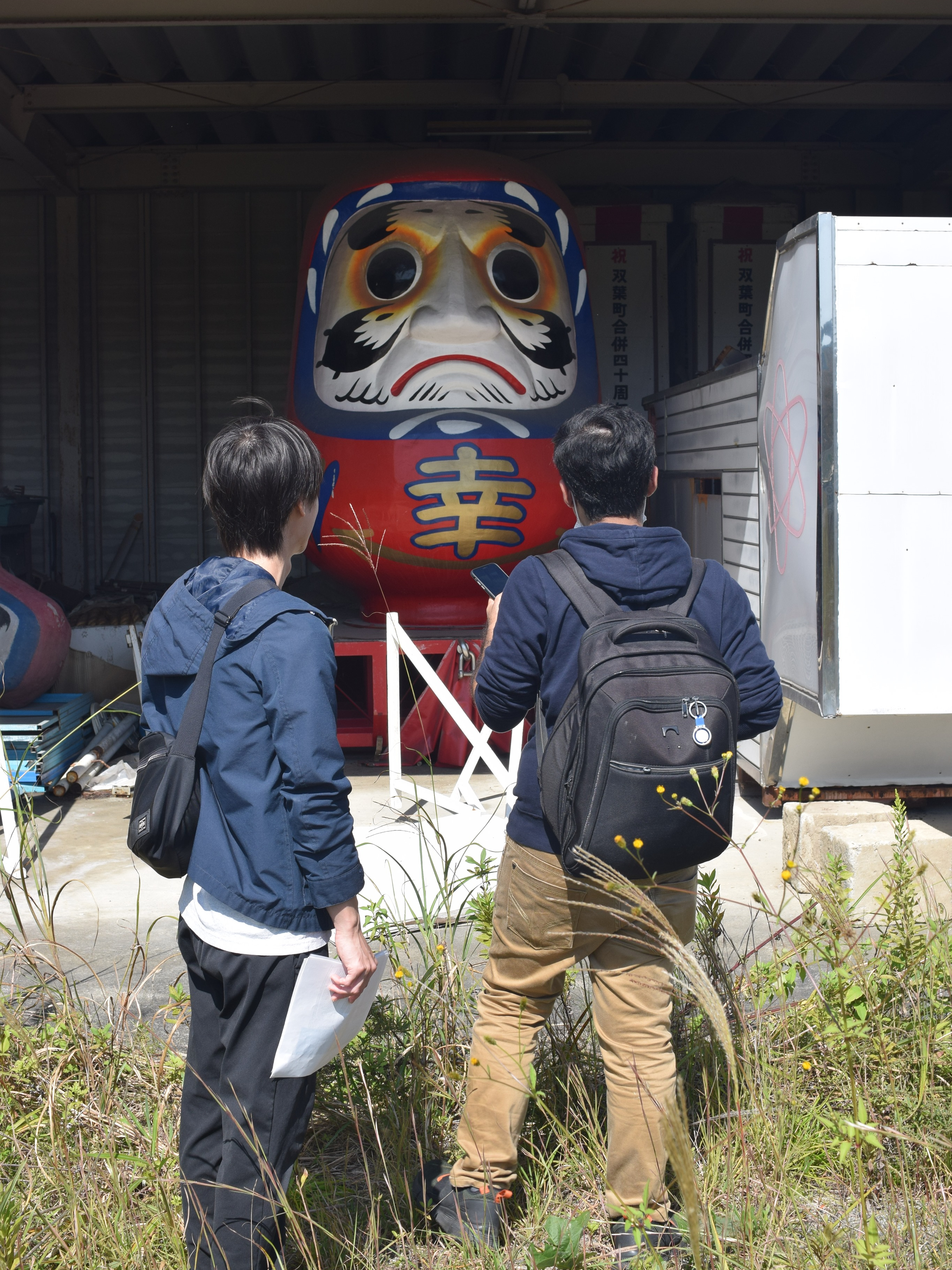
This next tour will also take you around Futaba town, but this time it is a cycling tour. Learn about how the town has been progressing ever since the nuclear disaster occurred in 2011. Hear stories of the people who used to live in Futaba town. Learn what happened before, during, and after the disaster. It is a tour that will make you rethink the nuclear disaster.
▽If you want to know more about Fukushima, this article is also recommended to read▽
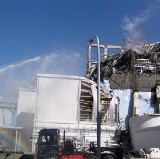
For more info about Japan, check these articles below!

▽Related Articles▽
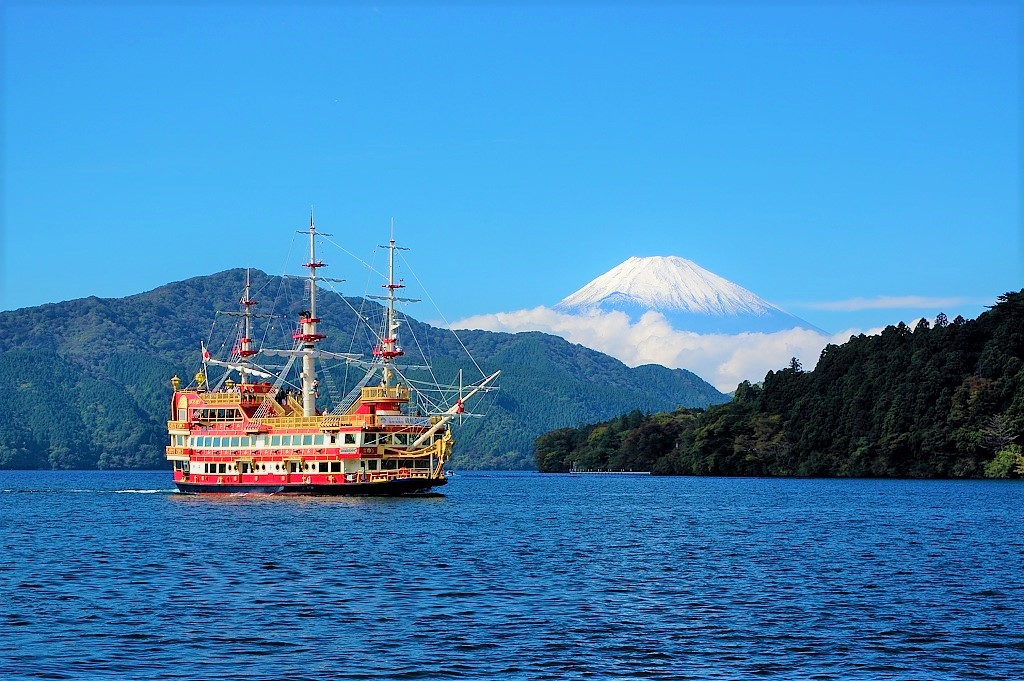
▼Editor’s Picks▼
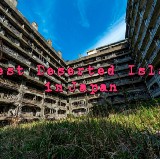
I'm writing by my motto: helping travelers spend their limited time experiencing something priceless in Japan. My articles won't let you down! Living in Tokyo and traveling many popular and hidden sites all over Japan, I deliver well-selected and latest tourist information to you from the perspective of “100% Japanese local”. My specific interests are island hopping, eating countless bowls of ramen, watching anime and reading manga. Enjoy Japan Web Magazine for recommended food spots, hidden gems Japanese Otaku (geek) culture, and everything about Japan :)

10 Best Disaster Movies With Great Acting, Ranked
Disaster films are a great many. Many release, and of those many, plenty feature cringeworthy dialogue, unbelievable performances, and unrealistic scenarios. However, many viewers who watch disaster films don't watch them for their accuracy or believability; rather, as viewers, we watch disaster films to experience a thrill that we would otherwise not experience in real-time. The thrill of it all is what engages viewers and captures their attention, and reasonably so—after all, how often do viewers experience a tsunami?
As mentioned before, plenty of disaster films are just plain cheesy. Sometimes, it's hard to get into the adrenaline-rushing thrill of it, so sometimes these films tend to do rather poorly. However, there are exceptions. Out of these exceptions, classics and fan-favorites are born. Others continue to remain a mystery to the ordinary viewer. But of those that are believable and thrilling to watch, these films feature exceptionally great acting that cannot be found elsewhere.
'Fukushima 50' (2020)
Directed by setsur wakamatsu.
On March 11, 2011, at directly 2:46 p.m., an earthquake of 9.1 magnitude struck Japan. This caused a tsunami, which in turn struck the Fukushima Daiichi Nuclear Power Plant. The flooding led to a loss of power within the nuclear reactor, and damage was caused to the reactor. Workers on duty at the time were in charge of cleaning up the mess through a process called venting, and this was led by shift supervisor Toshio Izaki ( Koichi Sato ).
Fukushima 50 is based on a real story of the meltdown of the Fukushima Daiichi Nuclear Power Plant. All of the actors did a great job in the film, making for a believable reenactment on how the power plant employees would have felt and reacted. Additionally, Sato performed well, as he was the reason for the serious tone behind the story. His concerns and fears for his people could be felt through the screen, and no reenactment could have been performed better than those in Fukushima 50 .
Watch on Tubi
'World War Z' (2013)
Directed by marc forster.
Gerry Lane ( Brad Pitt ) escapes with his family to Newark when zombies invade Philadelphia. Formerly a United Nations investigator, Gerry agrees to help find the origin of the virus so that the U.S. may combat the outbreak effectively.
When people and film fanatics talk about disaster movies, World War Z is hardly ever mentioned, unless it's a dig at the movie itself (it should be noted the film was fairly successful upon release, and got good reviews). Despite the relative lack of interest in World War Z these days, it starred Brad Pitt, one of the most popular actors in the 20th and 21st centuries. Known for his excellent performances in The Departed , Mr. & Mrs. Smith , and Interview with the Vampire , it’s no wonder that Brad Pitt was able to bring a dramatic performance to the zombie film.
World War Z
Based on the novel by Max Brooks, World War Z tells the story of a world ravaged by a zombie virus. Former United Nations investigator Gerry Lane (Brad Pitt) braves the apocalypse in search of a cure. He is tasked with finding the point of origin of the virus in order to synthesize a vaccine, reluctantly doing so in exchange for his family's safety. His search takes him around the world, where he witnesses all the devastation of the apocalypse.
Release Date June 20, 2013
Director Marc Forster
Cast Ludi Boeken, Matthew Fox, James Badge Dale, Brad Pitt, Mireille Enos, Daniella Kertesz
Rating PG-13
Watch on Netflix
'Dont Look Up' (2021)
Directed by adam mckay.
Kate Dibiasky ( Jennifer Lawrence ), a doctoral candidate in astronomy, discovers a comet. Her professor, Dr. Randall Mindy ( Leonardo DiCaprio ), confirms that this is in fact a comet—one that is doomed to collide with Earth and cause extinction.
So Don’t Look Up might not be the dramatic and emotional disaster film that other films are; it doesn’t make it any less of a disaster film as the characters face impending doom that is out of their reach. Don’t Look Up is filled with plenty of veteran actors. However, this is where Leonardo DiCaprio shines and his veteran acting experiences come into play. Having played a multitude of characters, ranging from serious roles to more comedic ones, DiCaprio has singlehandedly proven that he is an unbelievably versatile actor. Mixing comedy with his dramatic performance, DiCaprio—combined with Jennifer Lawrence’s funny and smart performance—creates a surprisingly realistic film. Sure, disaster is on the way, and the Earth is bound to reach its doom, but life goes on—unfortunately.
Don't Look Up
Two low-level astronomers must go on a giant media tour to warn humankind of an approaching comet that will destroy planet Earth.
Release Date December 24, 2021
Director Adam McKay
Cast Timothe Chalamet, Jonah Hill, Cate Blanchett, Gina Gershon, Leonardo DiCaprio, Jennifer Lawrence
'The Poseidon Adventure' (1972)
Directed by ronald neame.
On luxury ocean liner SS Poseidon, meant to be retired, is heading to Athens. The new owner of the liner decides to cut costs, and to save money, he insists on going at its full speed. On the liner, there is a variety of different passengers enjoying their time. Then one night, when the guests gather in the dining hall, an undersea earthquake strikes, leading to a tsunami that hits the ship and flips it upside down. Now, the only way to safety is to go up—which is down.
The Poseidon Adventure is a classic disaster film, one that viewers can't help but come back to watch for the great performances. Every actor cast in the film headlined by Gene Hackman did a commendable job, providing a believable performance of a tragedy striking a community attempting to survive against near-impossible odds. It's no wonder that The Poseidon Adventure won several awards including two Oscars, with Shelley Winters picking up a Best Supporting Actress prize.
The Poseidon Adventure
A group of passengers must embark on a harrowing struggle for survival after a rogue wave capsizes their cruise ship at sea.
Release Date December 13, 1972
Director Ronald Neame, Irwin Allen
Cast Stella Stevens, Carol Lynley, Roddy McDowall, Red Buttons, Gene Hackman, Ernest Borgnine
Watch on Apple TV+
'Twister' (1996)
Directed by jan de bont.
Jo Harding ( Helen Hunt ), having experienced an F5 tornado firsthand, leads a team of storm chasers so that she can potentially revolutionize tornado research. She and her ex-husband Bill ( Bill Paxton ) join together once more to chase tornadoes raging through Oklahoma so that they can achieve their idea. However, with each storm they chase, they face greater and greater risks.
Twister is one of the most popular disaster films of the century. While plenty of disaster films focus on the solo, sometimes isolated, experiences of people, Twister zones in on the community aspect of disaster films and what happens when people work together to achieve something greater. The cast of the film performed well, creating a real sense of community between the characters.
Bill and Jo Harding, advanced storm chasers on the brink of divorce, must join together to create an advanced weather alert system by putting themselves in the cross-hairs of extremely violent tornadoes.
Release Date May 10, 1996
Director Jan de bont
Cast Jeremy Davies, Bill Paxton, Helen Hunt, Alan Ruck, Jami Gertz, Todd Field, Phillip Seymour Hoffman, Cary Elwes
Watch on MAX
'The Wave' (2015)
Directed by roar uthaug.
Kristian Eikjord ( Kristoffer Joner ) is a geologist working his last day in Geiranger before the big move to Stavanger with his family. However, while everyone else is prepared to move, Kristian has an epiphany about the disappearing groundwater detected by the mountain sensors. This forces him back to his old job where he attempts to investigate the cause, and though he brings up genuine and legitimate concerns, his former boss only agrees to keep an eye on the sensors. Due to his outburst, Kristian and his family have to stay in Geiranger another night. While Kristian and his daughter stay at their emptied home, he examines older documents on previous avalanches, and to his horror, he realizes that the same thing is happening in Geiranger. A rockslide occurs, a tsunami hurls toward the small town, and Kristian and his family must try to survive the massive way coming their way.
The Wave is a Norwegian film that has incredibly believable acting, especially from Kristoffer Joner and Ane Dahl Torp . Joner puts on a believable display of panic setting in when he realizes that the entire town is in danger. This is especially the case for The Wave ’s sequel, where Joner’s character develops PTSD, this being obvious in the uncertainty, hesitation, and fear that can be seen on his face. As for Torp, she does significantly well in the role of a mother whose one and only concern is her children, especially when her voice is filled with desperation as she begs Kristian to take their daughter to safety. Both Joner and Torp make for an emotional duo, whose on-screen love feels real.
'Train to Busan' (2016)
Directed by yeon sang-ho.
Workaholic Seok-woo (Gong Yoo) embarks on a train to Busan with his estranged daughter Su-an (Kim Su-an) so that she can spend her birthday with her mother. However, soon after the train’s departure, a few passengers are infected with a virus that turns them into zombies. Seok-woo must protect his daughter at all costs.
Gong Yoo has proven himself, time and time again, to be an excellent actor. His performances in Goblin and Squid Game prove that he is a versatile actor, going from an estranged and distant father who clearly loves his daughter to a broken man who has relived his trauma for centuries to a cynical businessman. And while the other main cast of characters and actors do exceptionally well, Gong Yoo really pulls the movie together. In Train to Busan , viewers are in for an emotional ride as they witness Gong Yoo become a loving father who will do anything for his daughter, even if it means sacrificing himself. Such a performance will bring viewers to tears—undoubtedly.
Train to Busan
Release Date July 20, 2016
Director Sang-ho Yeon
Cast Eui-sung Kim, Su-an Kim, Yu-mi Jeong, Yoo Gong, Woo-sik Choi, Dong-seok Ma
Runtime 118
Main Genre Action
Watch on Viki
'Gravity' (2013)
Directed by alfonso cuarn.
Matt Kowalski ( George Clooney ) and Ryan Stone ( Sandra Bullock ) end up being the only two survivors on the space shuttle Explorer after space debris strikes it. As they try to escape to safety and return to Earth, having deep, meaningful, and heartfelt conversations along the way, Matt sacrifices himself so that Ryan doesn’t drift off into space and can return home.
Gravity is a film that isolates a single character from everything and everyone, ultimately establishing a film that relies solely on a single actor. In this case, Sandra Bullock, known for her excellent performances in Practical Magic , While You Were Sleeping , and Bird Box —in addition to many others—is the star of Gravity . Her performance as Ryan Stone is excellent, bringing viewers in for an emotional and tense watch as they follow along on Ryan’s claustrophobic and isolated adventure.
Two astronauts work together to survive after an accident leaves them stranded in space.
Release Date October 3, 2013
Director Alfonso Cuarn
Cast Amy Warren, Paul Sharma, Orto Ignatiussen, Ed Harris, Sandra Bullock, George Clooney
'The Impossible' (2012)
Directed by j.a. bayona.
Maria Bennett ( Naomi Watts ) goes on a trip to Khao Lak, Thailand, with her husband Henry and three children. As they enjoy the resort, a tsunami strikes the area, separating the family. In these dark times, kindness and courage help them survive.
The Impossible is based on a real-life woman named María Belón and her family during the Indian Ocean tsunami that occurred in 2004. While plenty of films based on real-life disasters tend to lean perhaps too far into the fiction department (looking at Titanic ), The Impossible ’s retelling was considered an accurate reenactment , and such praise can be thanked to the realistic and heartbroken portrayals by the actors of the film.
The Impossible
The story of a tourist family in Thailand caught in the destruction and chaotic aftermath of the 2004 Indian Ocean tsunami.
Release Date January 4, 2013
Director Juan Antonio Bayona
Cast Naomi Watts, Samuel Joslin, Oaklee Pendergast, Marta Etura, Ewan McGregor, Tom Holland
Watch on Apple TV +
'Titanic' (1997)
Directed by james cameron.
During an expedition to retrieve the Titanic’s lost relics, Brock Lovett’s ( Bill Paxton ) team comes across a safe that they expect to contain the missing diamond known as the Heart of the Ocean. However, disappointment arises as they find no diamond; instead, in the safe’s compartment, they find a drawing of a woman wearing the necklace. Broadcasting this story, Rose Dawson Calvert ( Gloria Stuart ) contacts Lovett to identify herself as the woman in the photo. She joins Lovett’s research vessel, recounting her story on the Titanic and the affair that ensued between her young self ( Kate Winslet ) and Jack Dawson ( Leonardo DiCaprio ).
The entire, expansive cast is perfect here (a testament to the direction as well), but Titanic might be Leonardo DiCaprio’s biggest and most influential role . Based on the true story of the sinking of the “unsinkable” Titanic , fiction collides with reality, and DiCaprio plays the fictional yet heavenly charming Jack Dawson whom viewers have grown to love and care for. Due to his exceptionally charming performance, many viewers have found themselves sobbing at DiCaprio’s onscreen death. May Jack live forever in viewers' hearts.
A seventeen-year-old aristocrat falls in love with a kind but poor artist aboard the luxurious, ill-fated R.M.S. Titanic.
Release Date November 19, 1997
Director James Cameron
Cast Kathy Bates, Kate Winslet, Leonardo DiCaprio, Gloria Stuart, Frances Fisher, Billy Zane
Runtime 194 minutes
KEEP READING: The 10 Best Deaths in Disaster Movies, Ranked


COMMENTS
Learn more about the nuclear disaster and how far Fukushima has come in the reconstruction process in this educational 2-day tour! This tour includes a special visit to Fukushima Daiichi Nuclear Power Plant.
Standard Tour 2024 It's been 13 years since the earthquake, the tsunami, and the nuclear disaster suddenly happened all at once in Fukushima.
Fukushima Daiichi Nuclear Power Plant visit 2 day tour from Tokyo By Japan Wonder Travel 28 reviews Recommended by 100% of travelers 47 About from $640.00 per adult Lowest price guarantee Free cancellation Ages 18-65, max of 20 per group Duration: 2 days Start time: Check availability Mobile ticket Live guide: Japanese, English More What's included Departure and return Accessibility Additional ...
Fukushima Daiichi Nuclear Power Plant Tour. Over a decade ago, on March 11th 2011, the Great East Japan Earthquake (or the Tōhoku Earthquake) shocked not only Japan but the entire world. The 9.1 magnitude earthquake then triggered a tsunami that reached 40.5 metres high and flooded 10 kilometres further inland of Japan.
Fukushima Daiichi Nuclear Power Station Study Tour 2024 As an experimental trial, we are starting a study tour into Tokyo Electric Power Company (TEPCO) Fukushima Daiichi Nuclear Power Station (FDNPS) once every month, aiming to develop a new opportunity for international people to learn about the real site of the disaster and ongoing decommissioning process. This is a very special offer from ...
Fukushima Daiichi Nuclear Power Station Study Tour We start a trial study tour to take people into Tokyo Electric Power Company (TEPCO) Fukushima Daiichi Nuclear Power Station once every month to learn about the real site of the disaster and ongoing decommissioning process. Next available slots are July 26th (Fri) and August 29th (Thur).
The Fukushima Daiichi Nuclear Power Plant 2 Day Tour from Tokyo offers an immersive and eye-opening experience for those curious about the events and aftermath of the devastating 2011 disaster.
Fukushima Private Tour. Price. From 229 €. PICK YOUR DATE. Off the beaten path, photo spots and meeting locals. All inclusive: hotel, traditional dining, transportation and guide. Explore Fukushima beyond the tourist sites, sneak into buildings, take a hike.
The Fukushima Daiichi Nuclear Power Plant tour can be accessed via a direct train from Tokyo to Fukushima City, followed by a taxi ride to the power plant. Safety measures are in place during the tour, including regular radiation monitoring, expert guides with Geiger counters, and appropriate protective gear for visitors.
As TEPCO struggles to decommission the nuclear power plant wrecked in the 2011 earthquake and tsunami, visitors can safely tour the facility on regularly scheduled tours.
Fukushima Daiichi Nuclear Power Plant visit 2 day tour from Tokyo By Japan Wonder Travel 28 reviews Recommended by 100% of travelers See all photos About from $600.00 per adult Lowest price guarantee Free cancellation Ages 18-65, max of 20 per group Duration: 2 days Start time: Check availability Mobile ticket Live guide: Japanese, English More ...
The Fukushima Daiichi Nuclear Power Plant Visit 2 Day Tour from Tokyo offers a unique opportunity to explore the impacted Fukushima Daiichi Nuclear Power Plant and gain a first-hand perspective on the events of March 11, 2011. With an equipped guide and a focus on safety, visitors can learn about the current state of the plant and deepen their ...
This tour is truly an eye-opening experience and will change the way you think about the Fukushima area and the disaster. Available dates for our Fukushima Exclusion Zone 2-Day Tour in 2024 May 8-9, 22-23 June 3-4, 17-18 July 3-4 August 1-2 Book here Fukushima Daiichi Nuclear Power Plant Visit 2-Day Tour from Tokyo
Get a first-hand perspective on the events of March 11 2011 on this 2-day guided tour from Tokyo to Fukushima. Deepen your understanding of what happened then and what has happened since the incidents. Your guide (who is equipped with a Geiger counter) will safely guide you into the impacted Fukushima Daiichi Nuclear Power Plant and provide unmatched insights into what happened there.
Fukushima Daiichi Nuclear Power Plant Visit 2-Day Tour from Tokyo In Futaba Town which is one of the difficult-to-return zones, the restriction has been partly lifted and JR Futaba Station reopened in 2020.
Fukushima Daiichi Nuclear Power Plant Visit 2-Day Tour from Tokyo Learn more about the nuclear disaster and how far Fukushima has come in the reconstruction process in this educational 2...
Have you ever had the opportunity to visit Fukushima? The Great East Japan Earthquake struck the Tohoku coast of Japan on March 11, 2011, leaving an indelibl...
Visit an area that few people gain access to these days, on this interesting day trip to Fukushima from Tokyo. See where the tsunami hit in 2011, and the former residential zones that are now abandoned. Travel to within 12 miles (20 kilometers) of the Fukushima Daiichi Nuclear Power Plant, damaged during the earthquake, but stay safe with the help and knowledge of your guide.
This virtual tour allows anyone, anywhere to experience what it's like to be on the front lines of decommissioning work underway at the Fukushima Daiichi Nuclear Power Station.
Finally, I got the chance to visit the disaster-hit area in Fukushima with this Fukushima disaster area day tour from Tokyo by Japan Wonder Travel. We reached within only 2 or 3 kilometers from the Fukushima Daiichi nuclear power plant.
October 03, 2013. Tour of Fukushima Daiichi from Fairewinds Energy Education on Vimeo. Each week Fairewinds receives many questions about the ongoing tragedy unfolding in Japan as a result of the triple meltdown at the Fukushima Daiichi nuclear power plant. Join us as Fairewinds' Chief Engineer Arnie Gundersen highlights the many problems ...
Fukushima disaster area tour, Chiyoda. 8,405 likes · 8 talking about this · 83 were here. We operate the tour to visit Fukushima Disaster Area (within 20 km of Fukushima Daiichi Nuclear Power Plant).
Fukushima Daiichi nuclear power plant tour. 2024/8/7 15:00. Hi everyone, I'll be in Japan from September 8th and leaving on the morning of the 16th. I am very interested in taking a tour of the Fukushima Daiichi nuclear power plant during my visit. So far, I've only found one tour available in September, which is on the 5th.
The Fukushima Daiichi nuclear accident ... and releases of radioactive materials at the Fukushima I Nuclear Power Plant, following the Tōhoku earthquake and tsunami on 11 March 2011. [9] [10] It was the largest nuclear disaster since the Chernobyl disaster of 1986, ...
This aerial view shows the tsunami-damaged Fukushima Daiichi nuclear power plant in Fukushima, northern Japan, on Aug. 24, 2023, shortly after its operator, Tokyo Electric Power Company Holdings, began releasing its first batch of treated radioactive water into the Pacific Ocean.
The Fukushima Daiichi Nuclear Power Plant accident released considerable radionuclides into the environment. Radioactive particles, composed mainly of SiO2, emerged as distinctive features, revealing insights into the accident's dynamics. While studies extensively focused on high-volatile radionuclides like Cs, investigations into low-volatile nuclides such as 90Sr and Pu remain limited ...
The operator of the crippled Fukushima nuclear power plant plans to begin retrieving debris that contains melted nuclear fuel at one of the three meltdown-hit reactors as early as this month, with the unit to be the first to undergo the procedure.
On March 11, 2011, at directly 2:46 p.m., an earthquake of 9.1 magnitude struck Japan. This caused a tsunami, which in turn struck the Fukushima Daiichi Nuclear Power Plant.
The Marshall Islands decided to agree with other Pacific leaders to support Japan's release of treated nuclear wastewater, despite its president raising concerns. In August last year, Japan began discharging water collected from the Fukushima nuclear plant after an earthquake and tsunami in 2011 that caused it to melt down.
Restarting a closed nuclear plant is possible, even after a devastating accident. The Fukushima Daiichi plant in Japan closed in 2013 after an earthquake and tsunami damaged its power and cooling systems. By 2015, some reactors were back online, and by 2022, about 11 GW of nuclear capacity had been restored.